- Excellent Aus-tuned ride and handling balance
- Best in class 2.0L bi-turbo diesel engine
- Sport model looks tough on its black 20s
- Expensive versus competitors
- Feeling dated inside ahead of new model
- Rear cabin could be more practical
It’s been an interesting period for Ford in Australia. Formerly known as the ‘Falcon Car Company’, Ford’s transition from selling Australian-built Falcons and Territories to mostly selling the Ranger ute in just five years has been almost shocking to see. Not giving up in our market, Ford’s lineup has been revitalised and the Everest seven-seat SUV has been one of the more successful products so far. So what’s the Thai-built ute-based SUV like? We tested the 2022 Ford Everest Sport to find out.
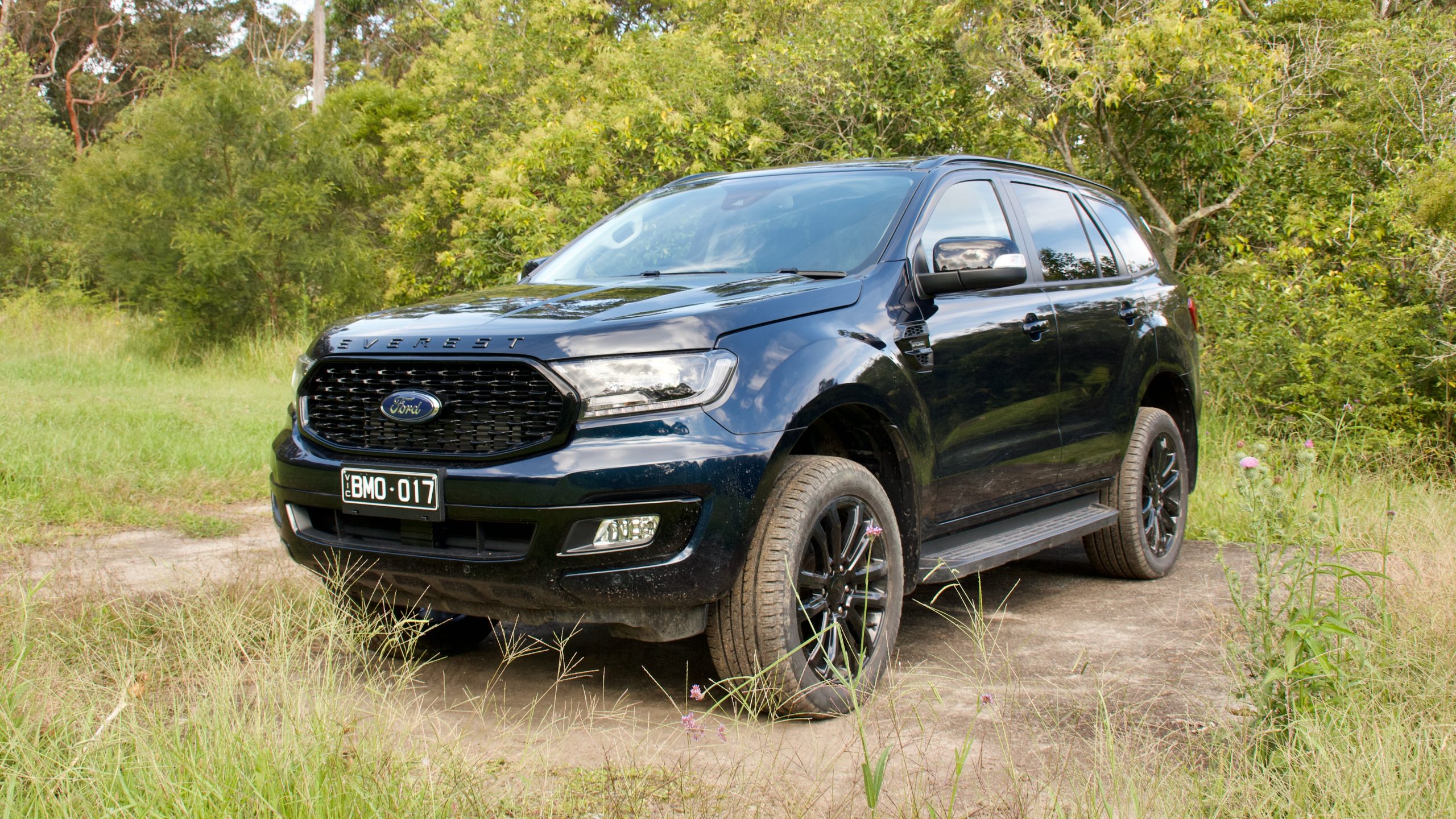
If you’re reading this from North America or Europe, the Everest is Ford’s large SUV in markets such as South East Asia, India and South Africa. Markets where the North American SUVs such as the current shape Explorer have never been offered. But unlike the car-based Explorer, the Everest is based on the successful T6 generation of Ranger Ute, and like that product, the Everest was actually developed in Australia by Ford’s Aussie engineers.
Price & Equipment: 7/10
The 2022 Ford Everest range starts at $50,090 plus on-road costs (around $55,000 drive away, depending on your location) and we tested the second-from-top Everest Sport with the 2.0-litre bi-turbo diesel engine and four-wheel drive. Its retail price is $64,390 plus on-road costs (around $70,000 drive away).
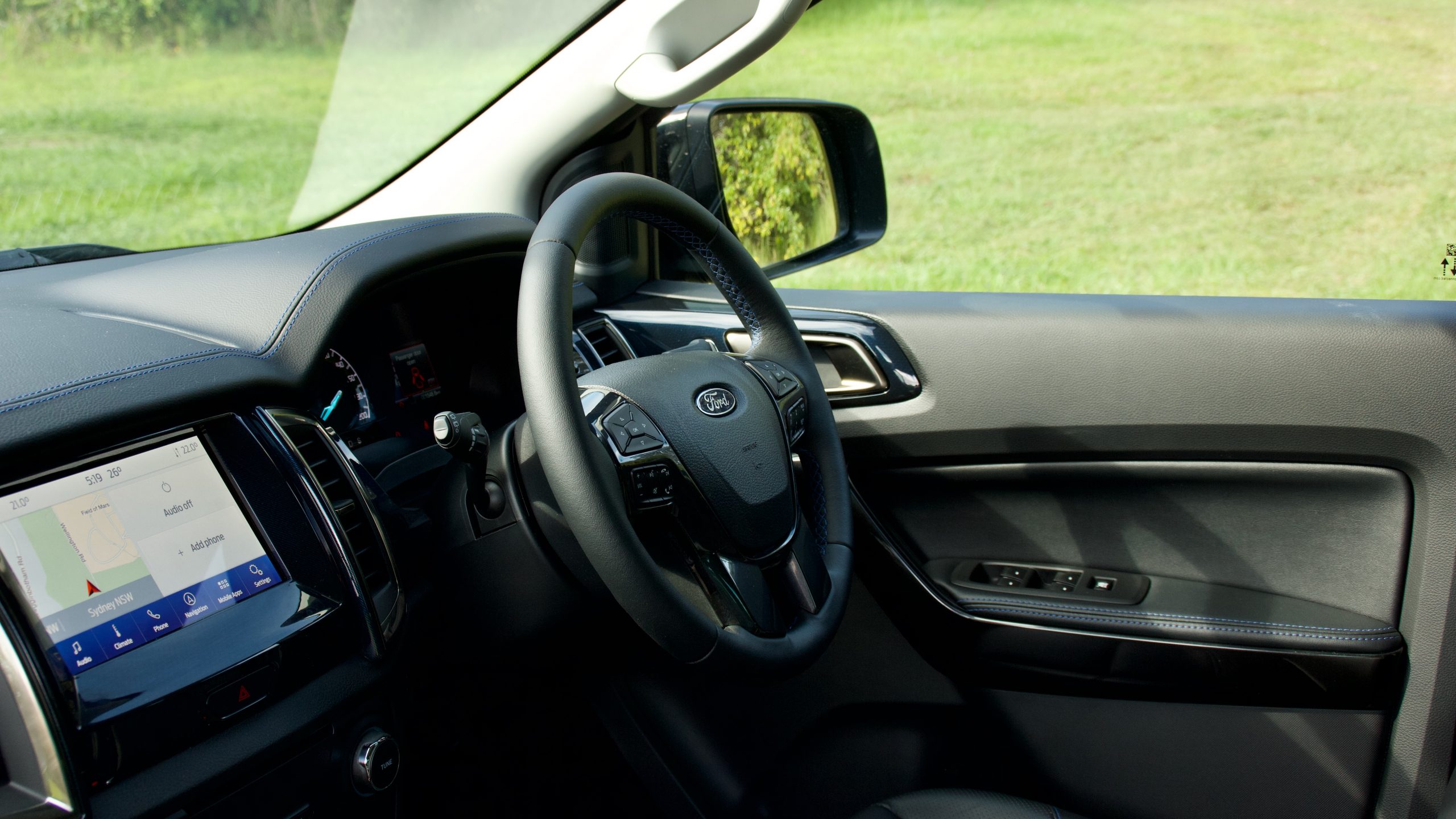
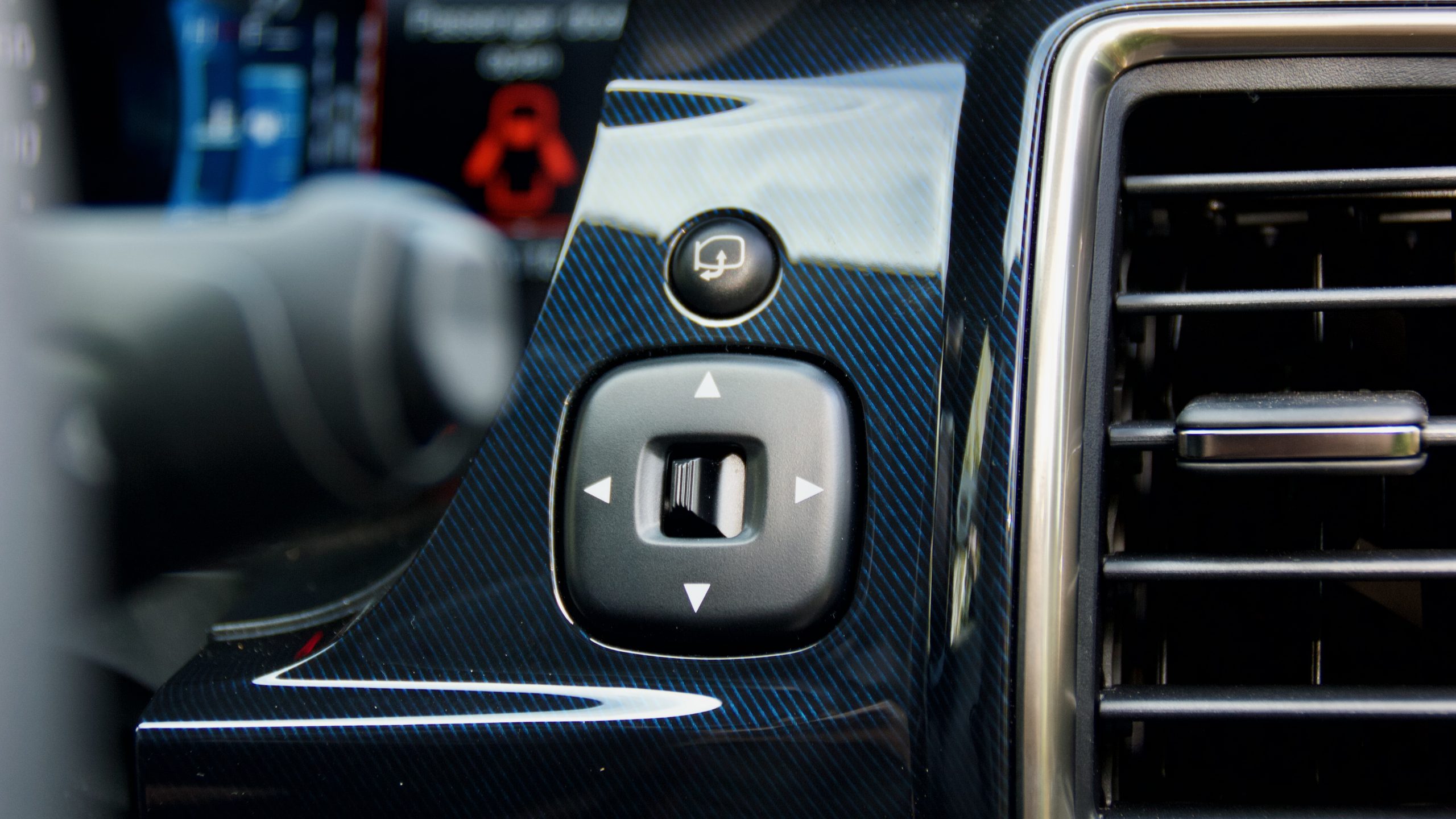
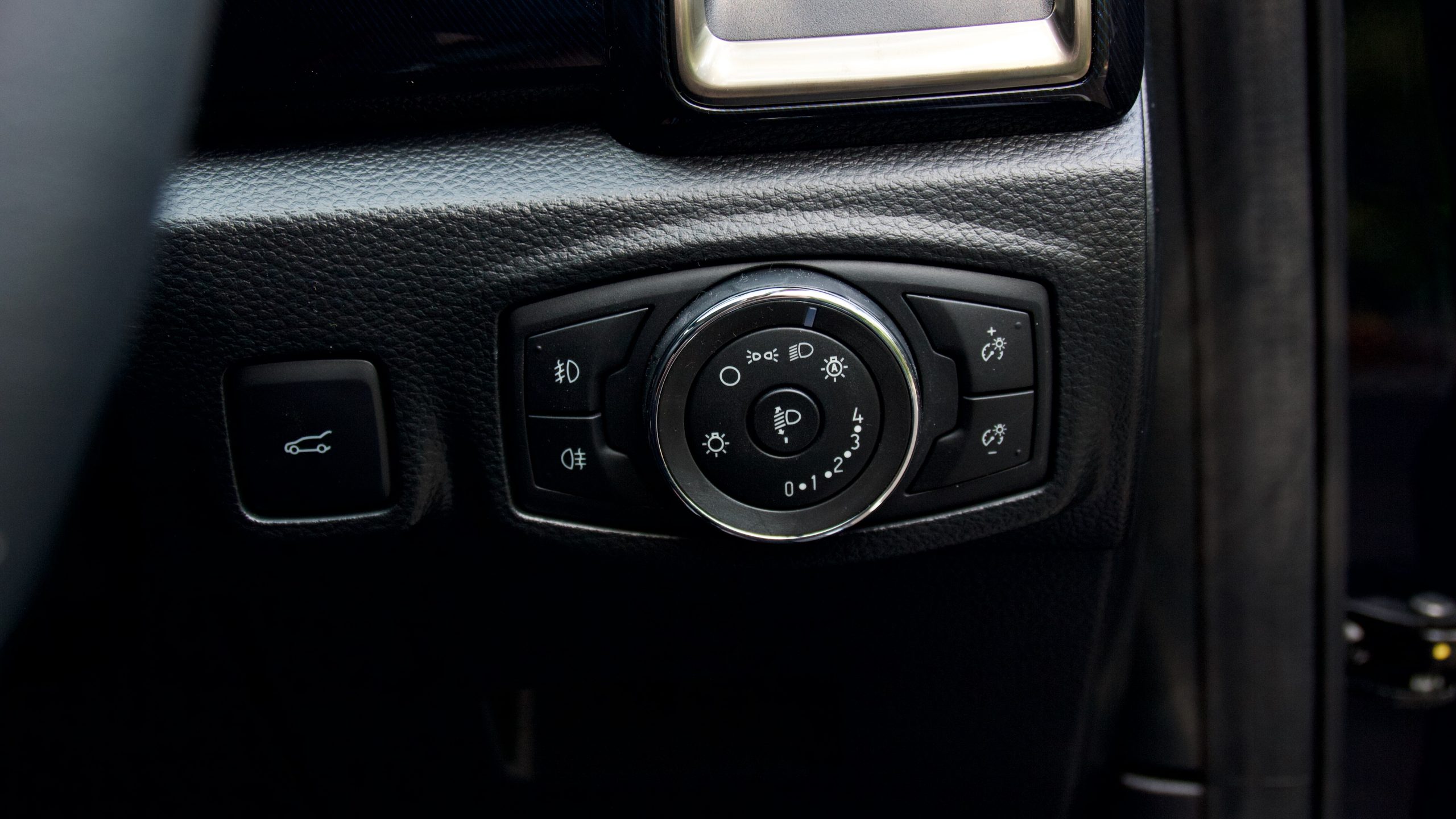
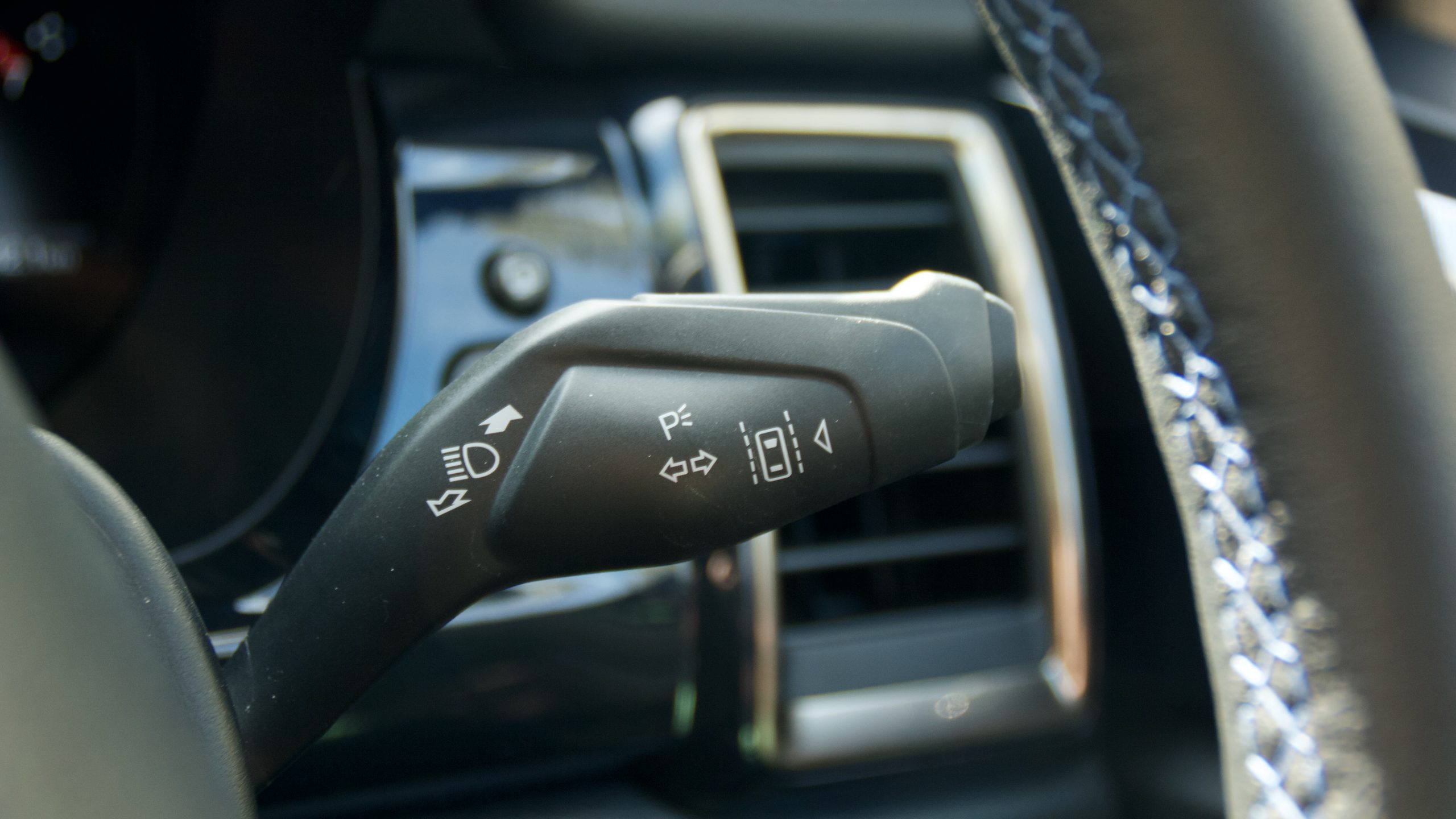
Standard equipment on the Sport includes automatic LED lighting, front and rear fog lights, auto wipers, dual-zone climate control, a rear fan speed controller, leather upholstery, a leather steering wheel and gear knob, keyless entry and start, an electric tailgate with kick-to-open functionality, roof rails, an 8.0-inch touchscreen with wired Apple CarPlay and Android Auto, digital radio, satellite navigation with live traffic, an eight-speaker sound system, an electric driver’s seat with manual lumbar adjustment, rear privacy glass and heated and electric-folding mirrors.
Sport-specific equipment includes black 20-inch alloy wheels, Sport logos on the seats and rear doors, plus black exterior highlights and body-coloured dashboard trims.
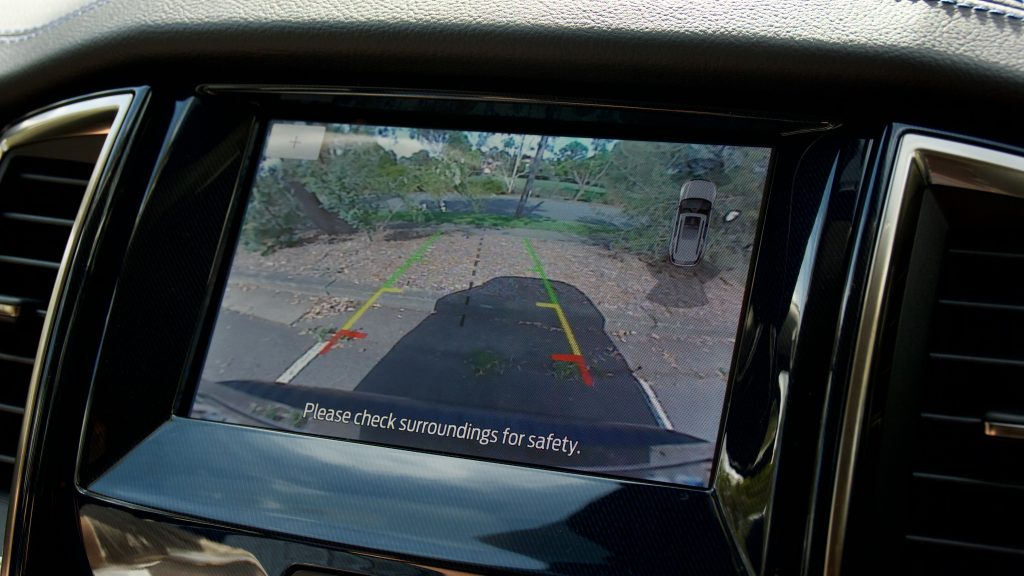
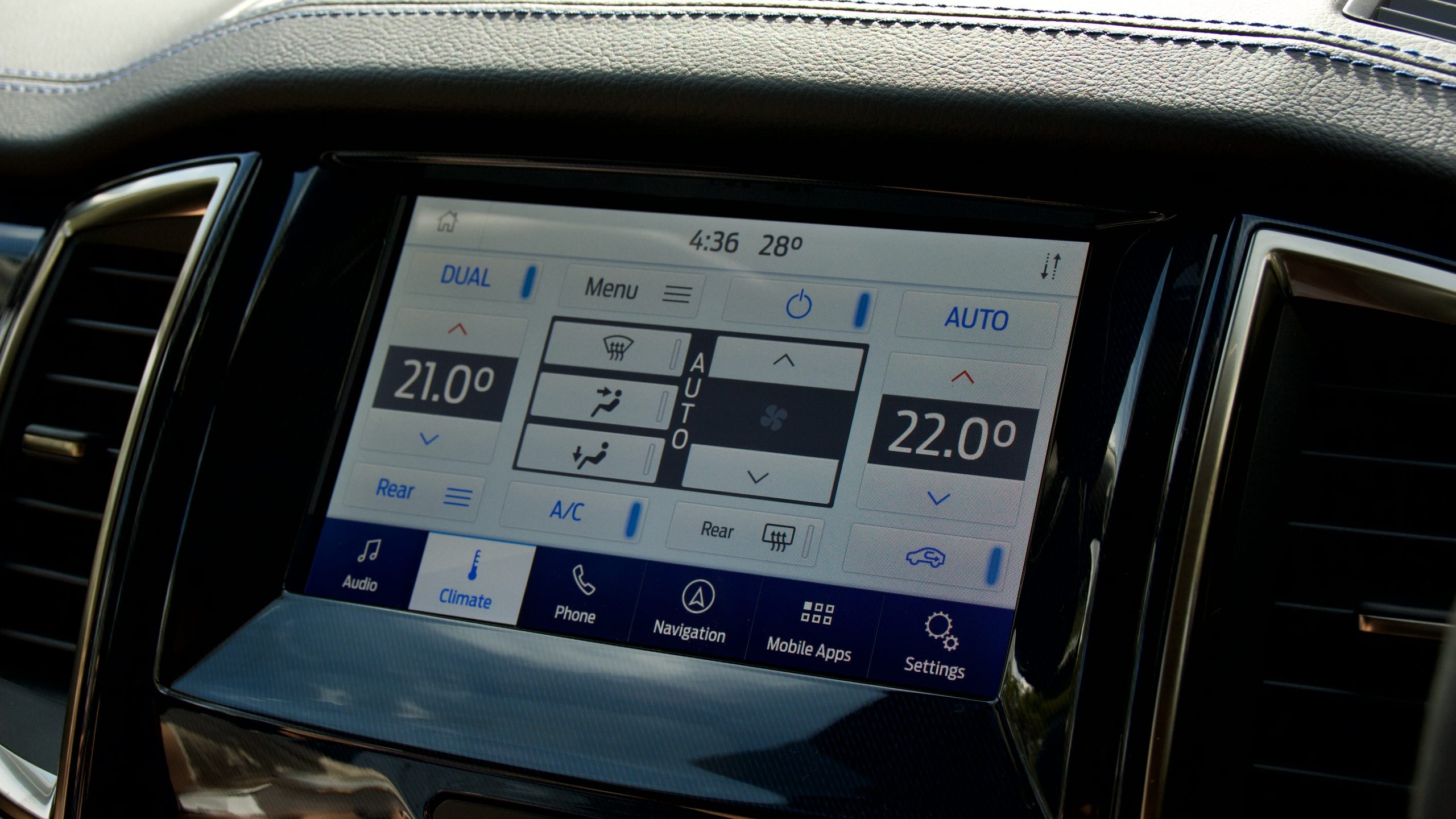
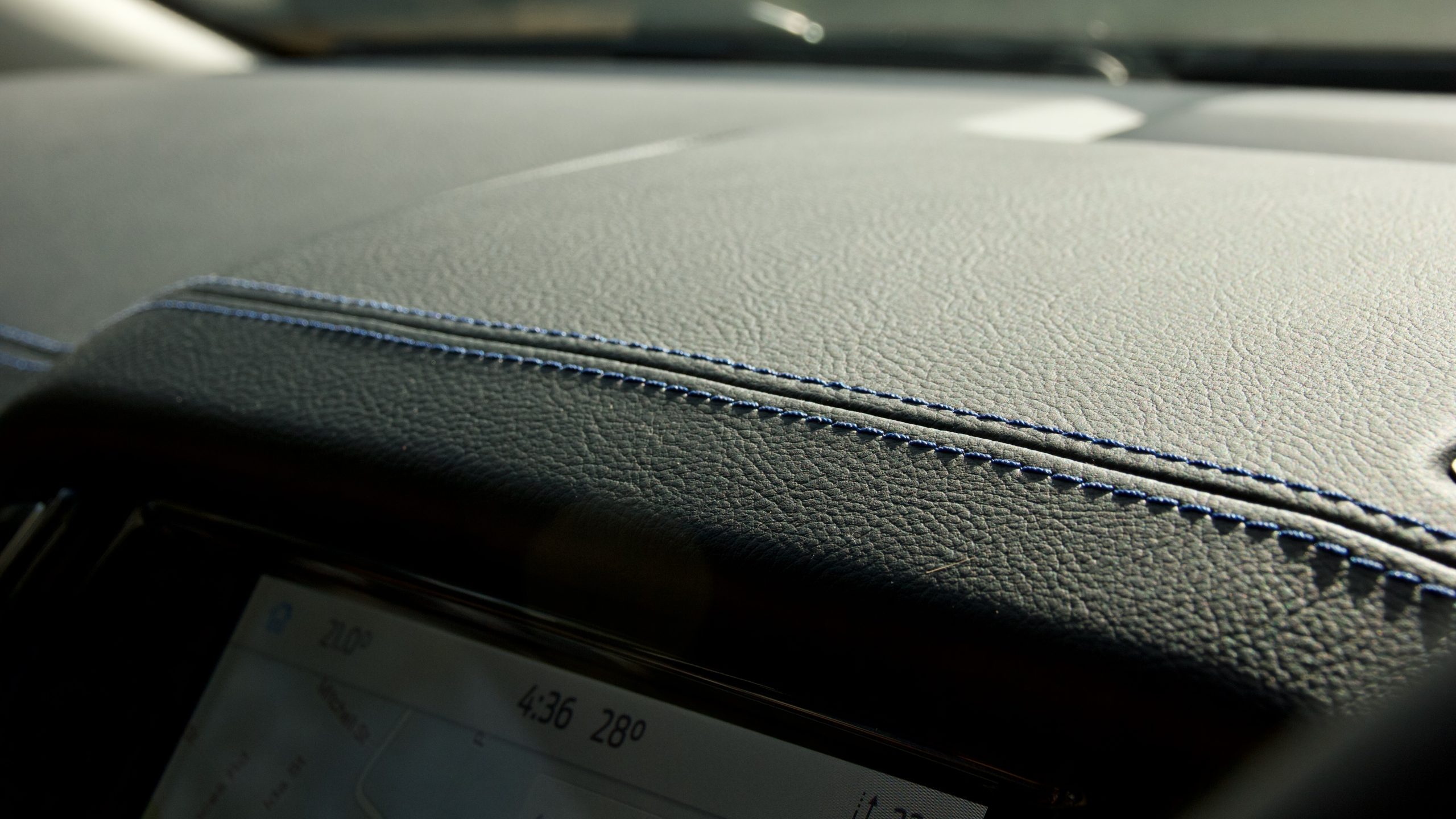
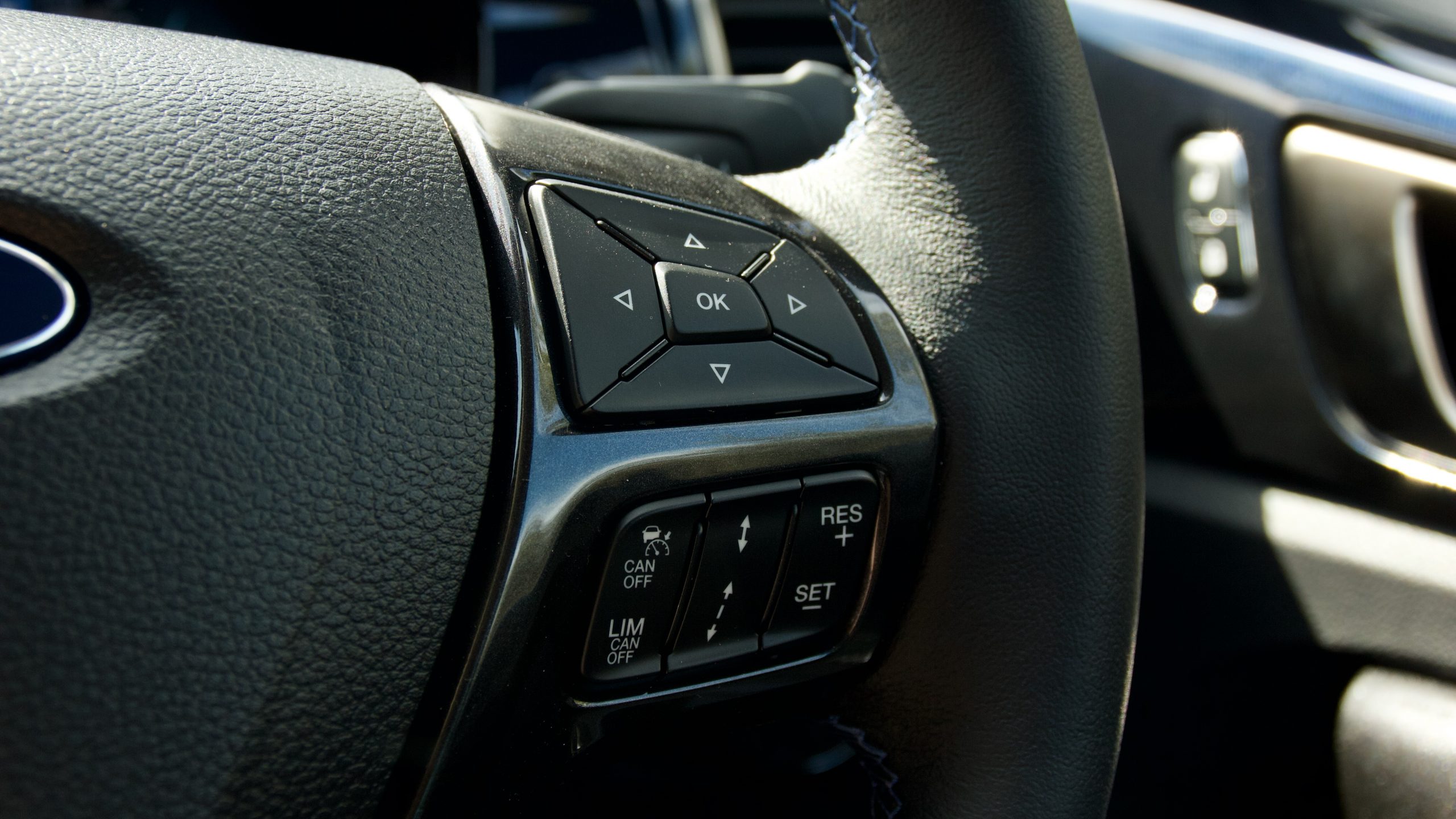
Safety equipment includes seven airbags, auto emergency braking (AEB) with forward collision warning and pedestrian detection, adaptive cruise control with stop and go functionality, lane departure warning, auto high beam, driver attention monitoring, speed sign recognition, an alarm, front and rear parking sensors and a reversing camera.
Unfortunately, the Sport does not feature the blind-spot monitoring with rear cross-traffic alert of the top-spec Titanium and it really should.
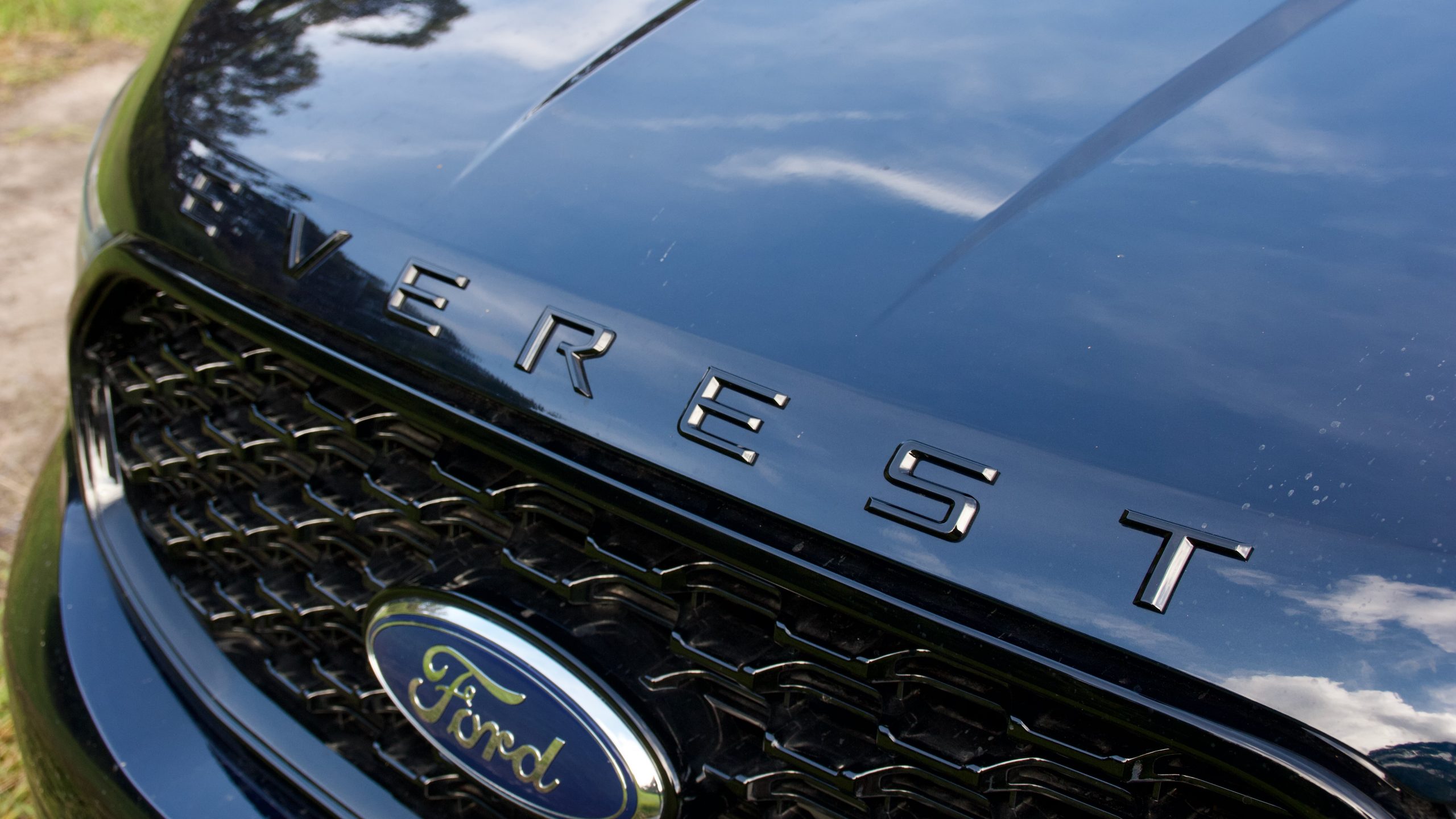
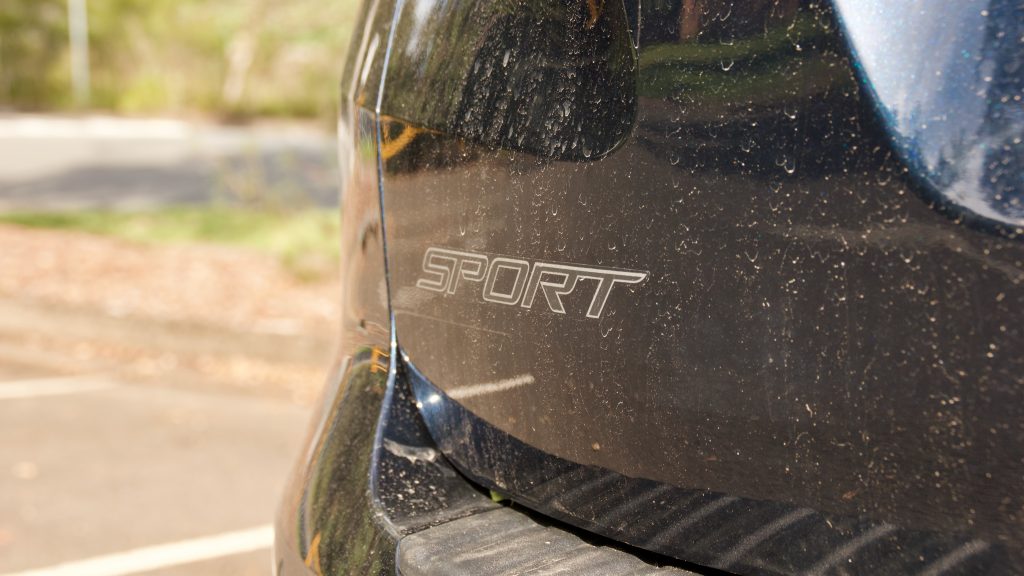
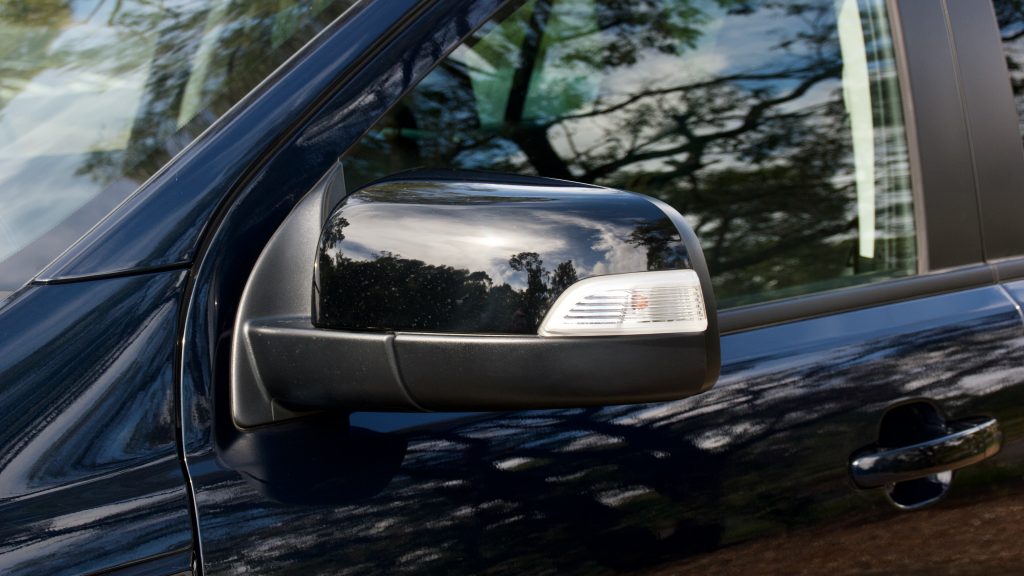
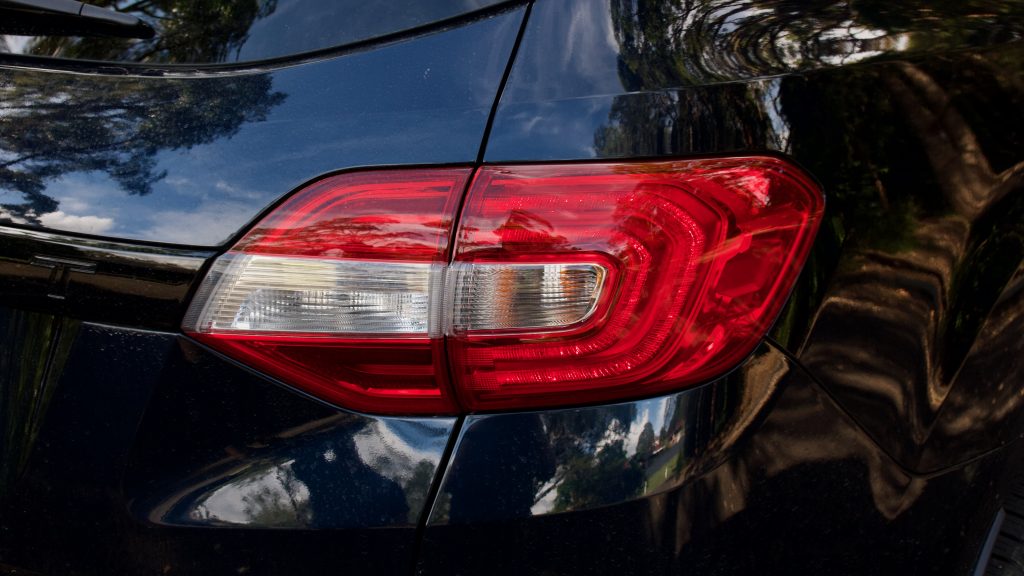
The Sport is available in just five colours: the no-cost ‘Arctic White’, as well as ‘Aluminium’, ‘Shadow Black’, ‘Meteor Grey’ and our test car’s ‘Deep Crystal Blue’ for $650 extra. The sole interior choice is black leather upholstery. Our test car was also fitted with the $300 Premium Pack, which adds electric-folding third row seating – we’d definitely tick that box, and it really should be standard.
Chief competition to the Everest Sport includes the $63,990 drive away Mitsubishi Pajero Sport GSR and $63,990 drive away Isuzu MU-X LS-T. Both these competitors offer better value for money than the Everest, particularly because they’re both the top-spec variants in each model lineup. The Everest still has the Titanium, which is priced at around $80,000 drive away, way above its competitors.
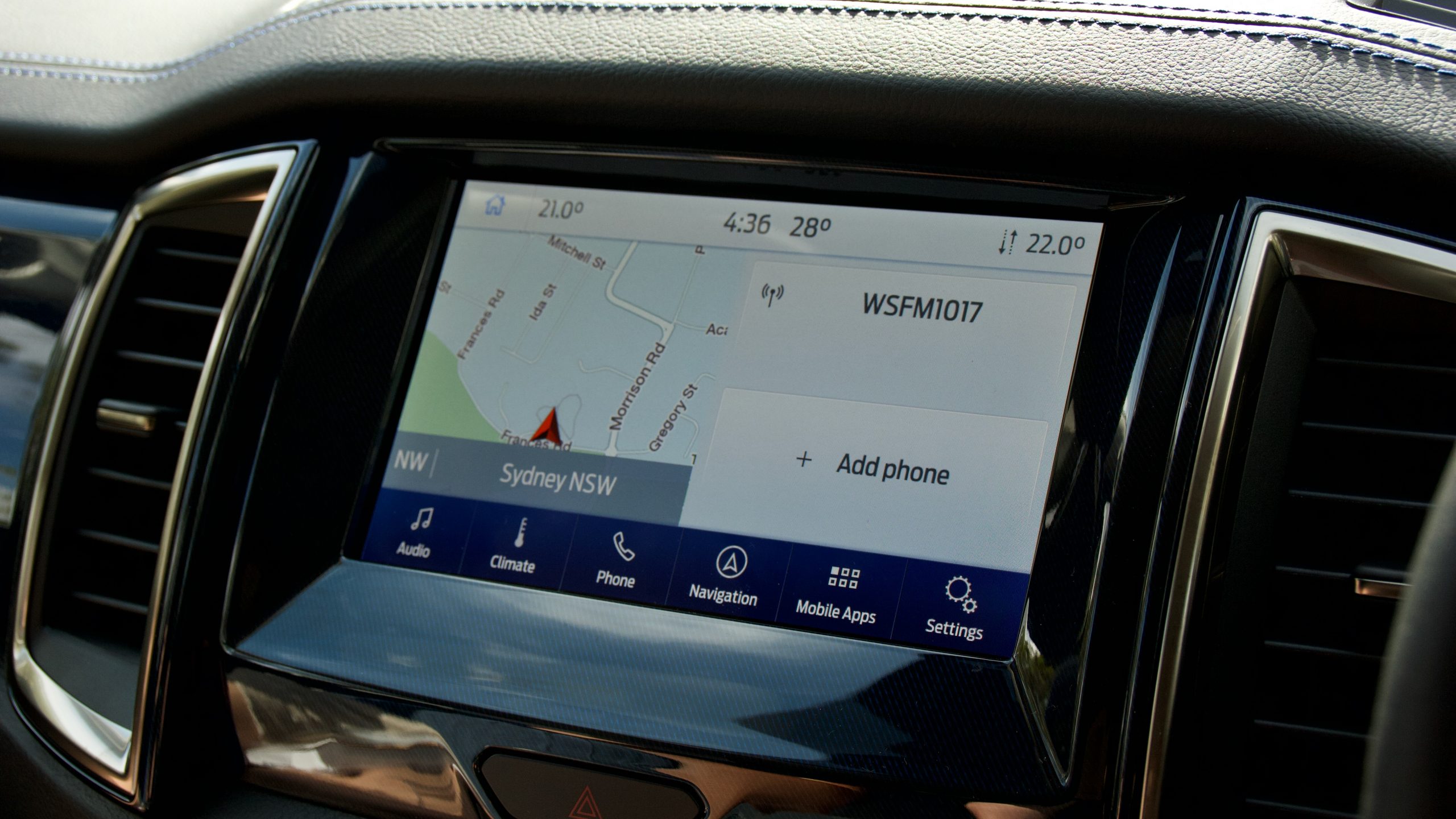
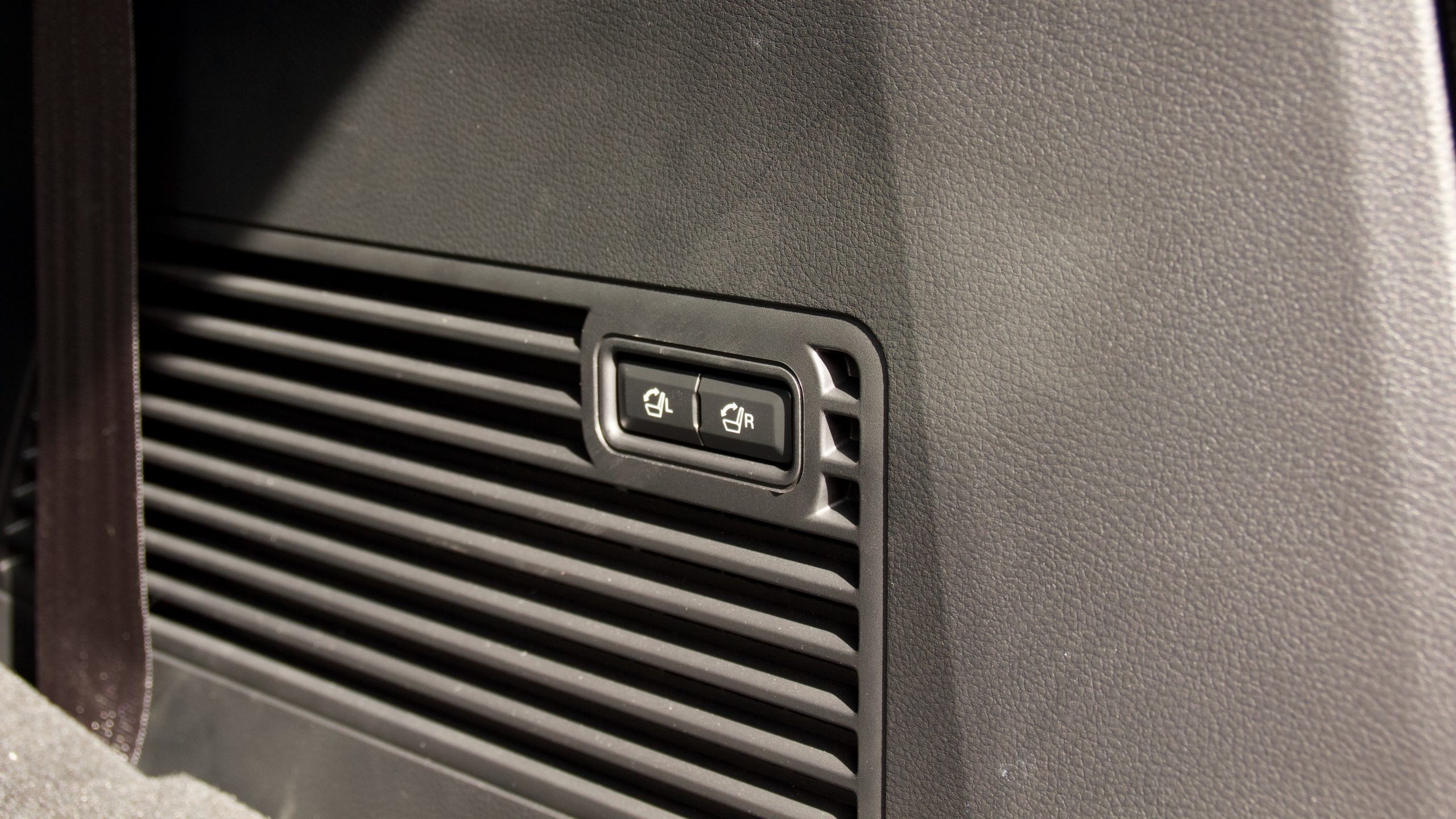
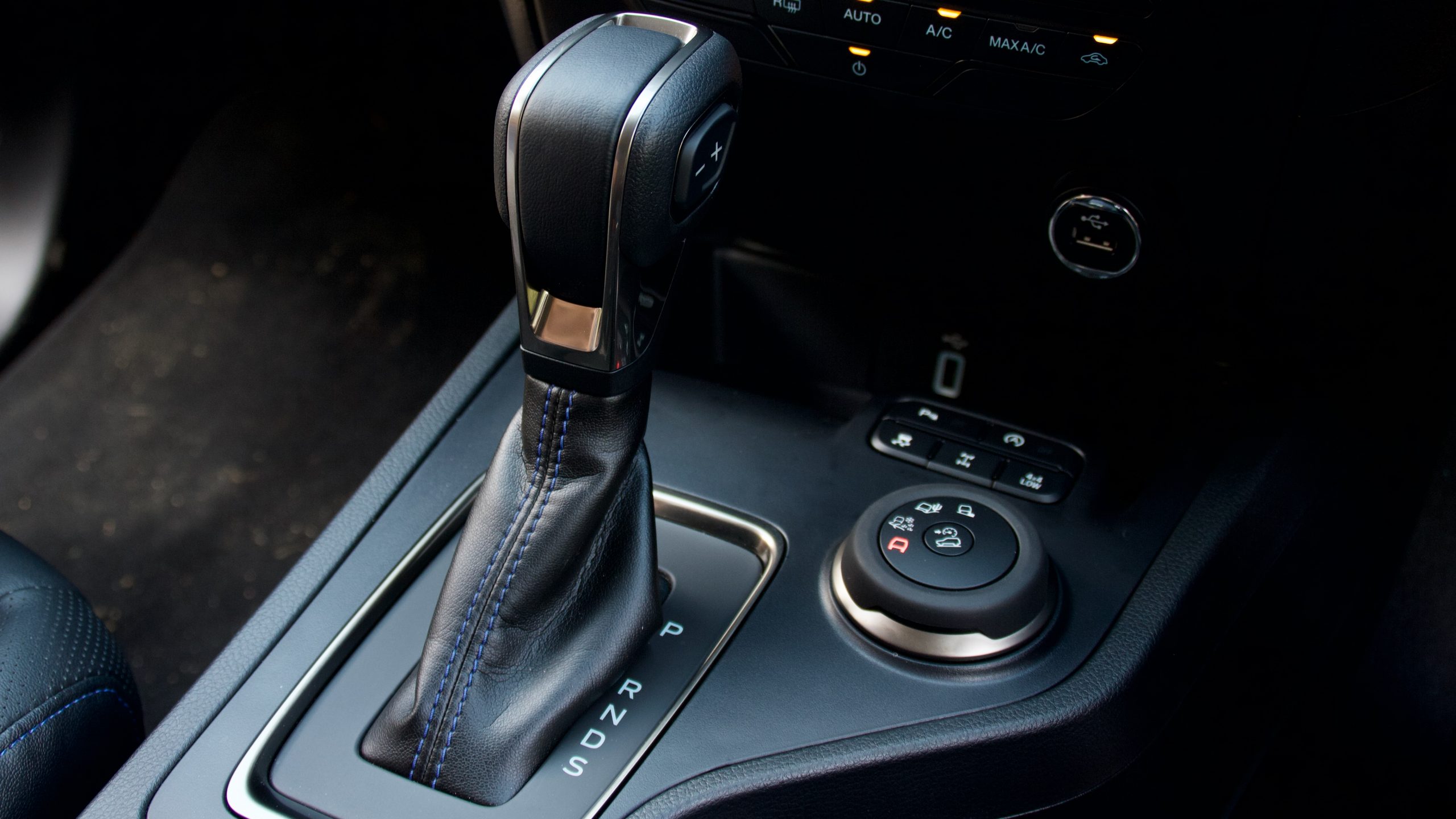
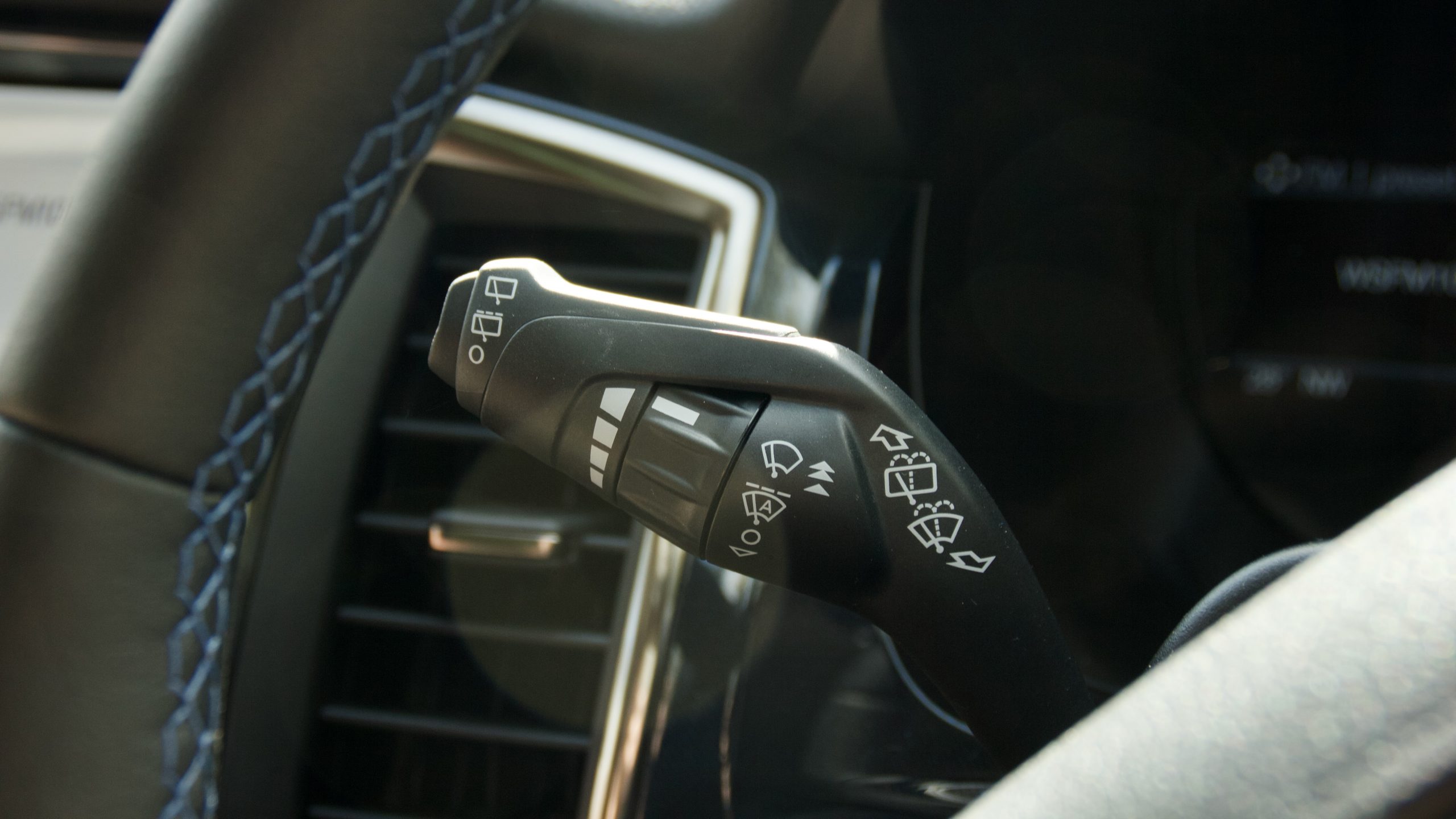
Spending the extra money to get to the Everest Sport from the Pajero Sport GSR and particularly MU-X LS-T gives a step backwards in equipment – the Isuzu features heated seats, much more safety kit like lane trace assist and blind-spot monitoring with rear cross-traffic alert and a larger centre screen than the Everest for $6,000 less. The Pajero Sport features heated front seats as well, with blind-spot monitoring with rear cross-traffic alert and a 360-degree parking camera also part of its standard equipment list.
Performance & Economy: 8/10
While an older 3.2-litre five-cylinder turbo diesel engine is also available, our test car came with the new 157kW/500Nm 2.0-litre twin-turbo four-cylinder diesel instead, which is mated to a 10-speed automatic transmission. Our test car was also fitted with the optional four-wheel drive system – rear-wheel drive is also available for those who don’t need the off-road ability.
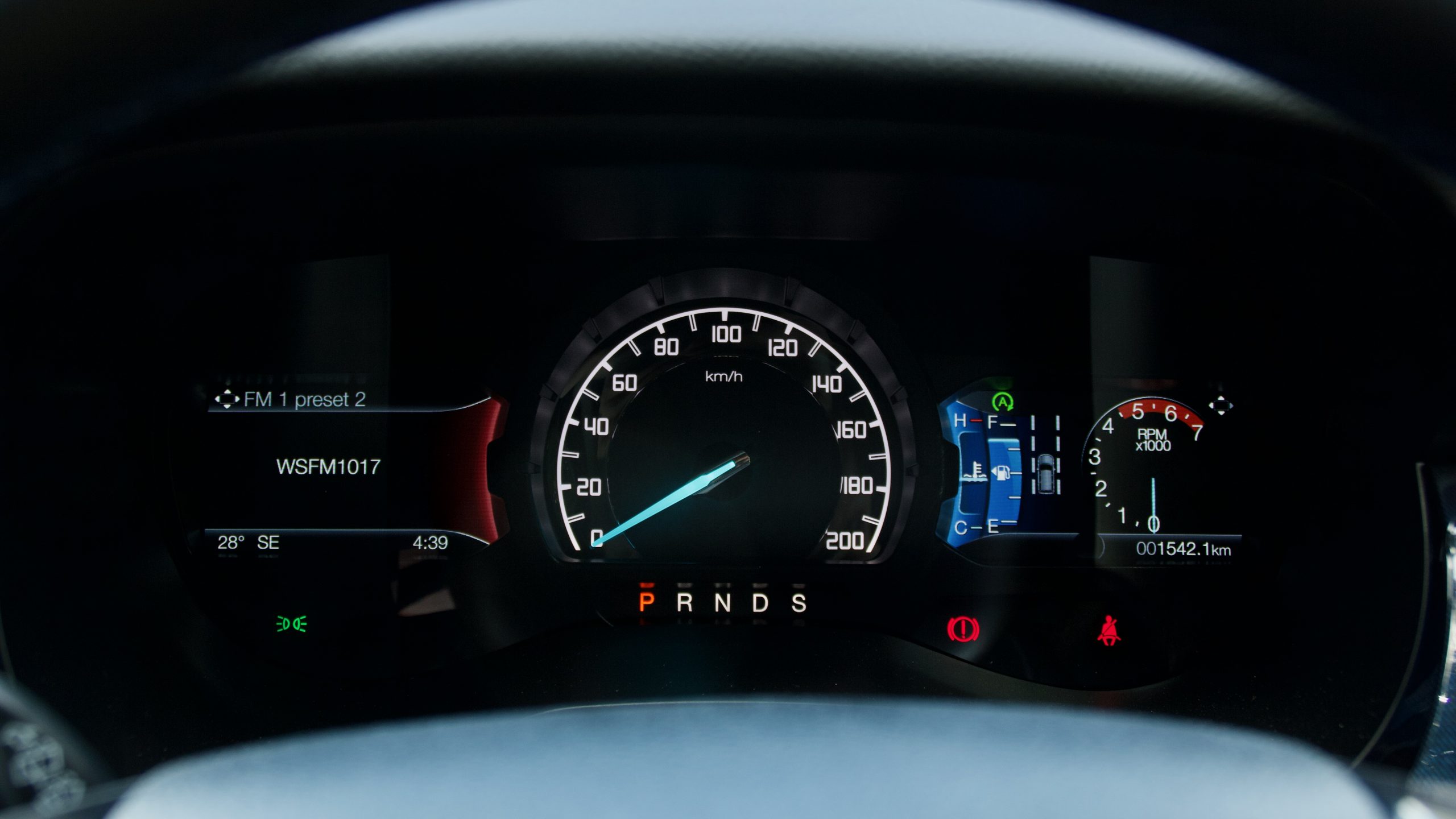
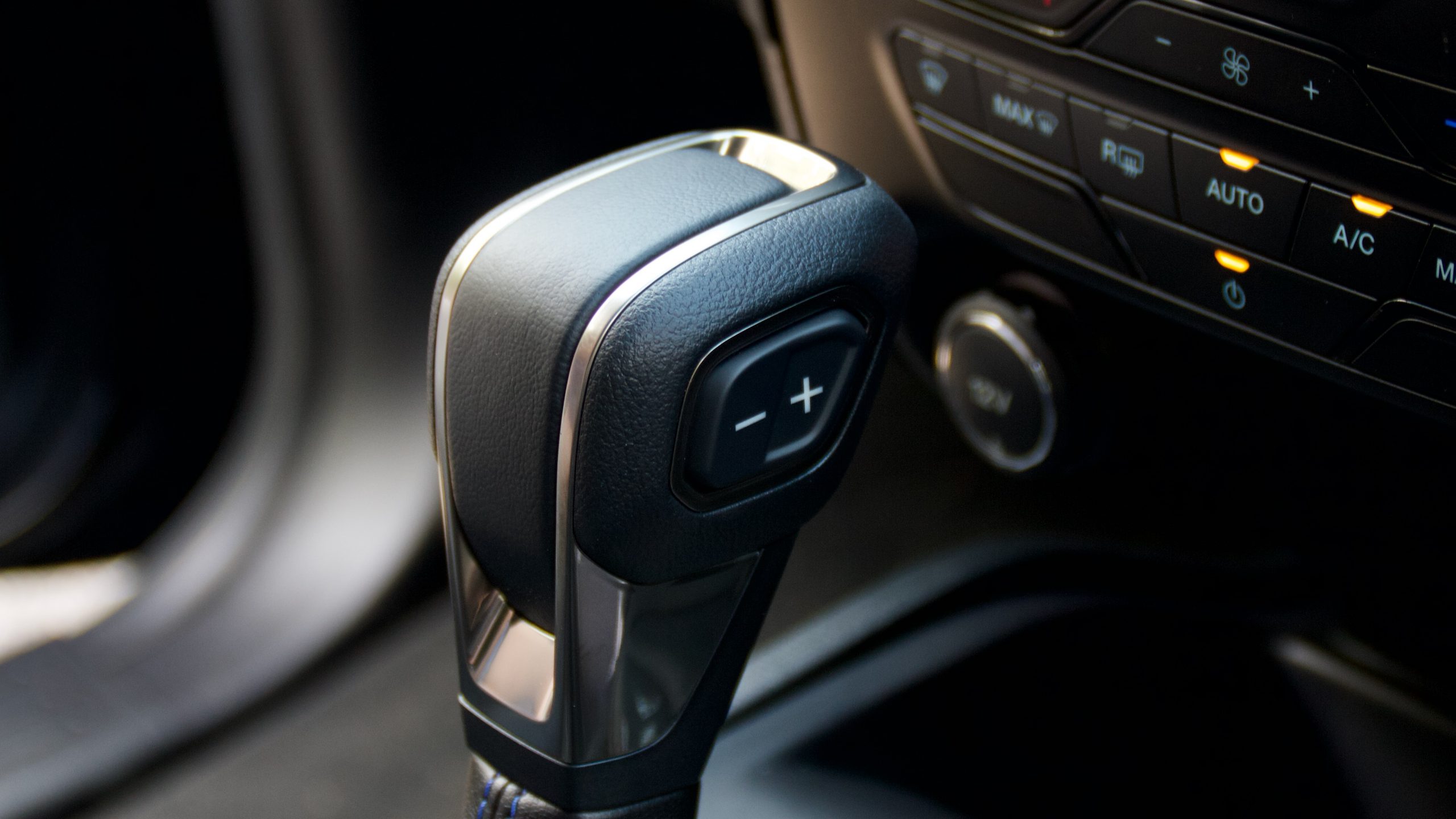
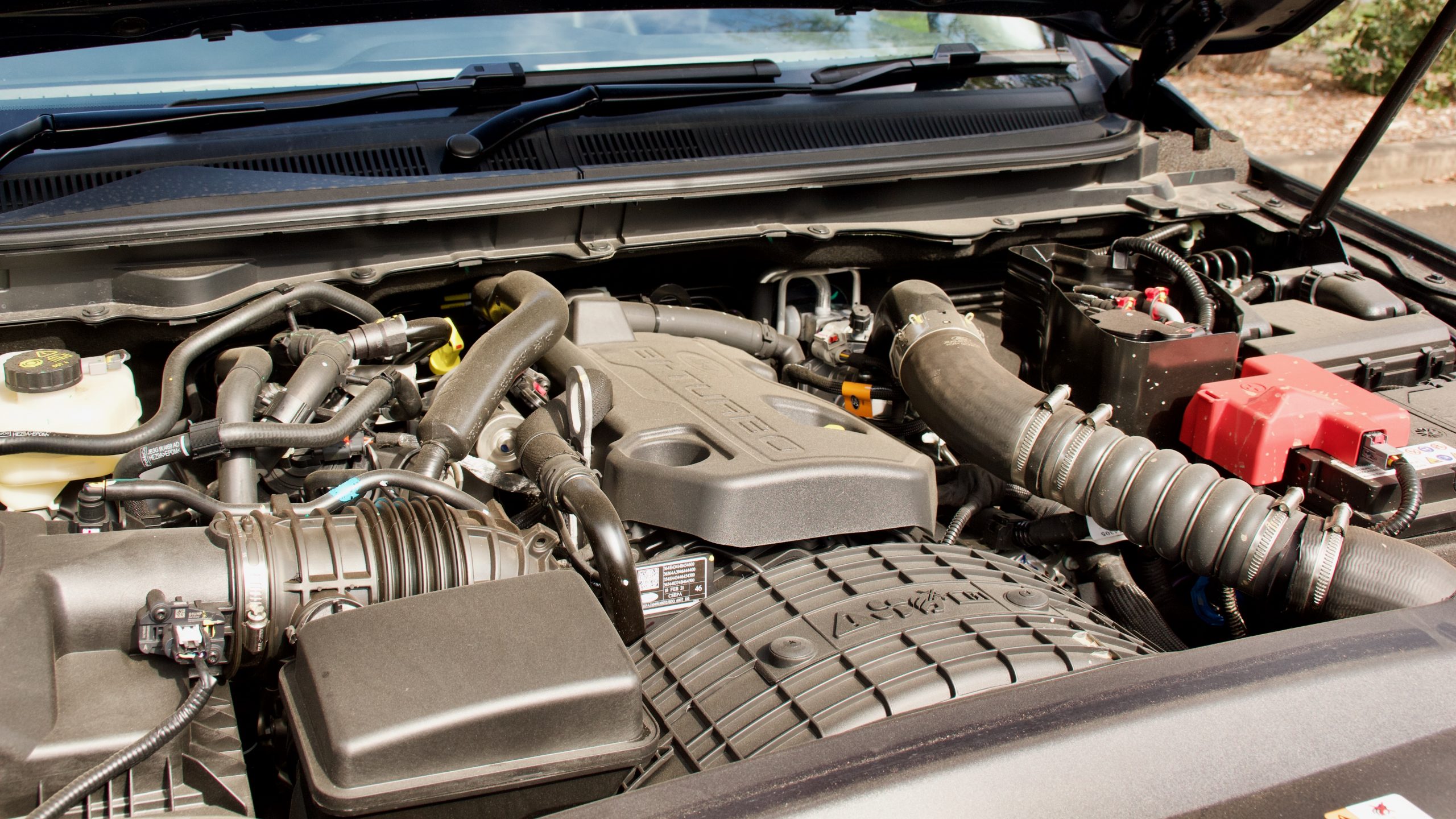
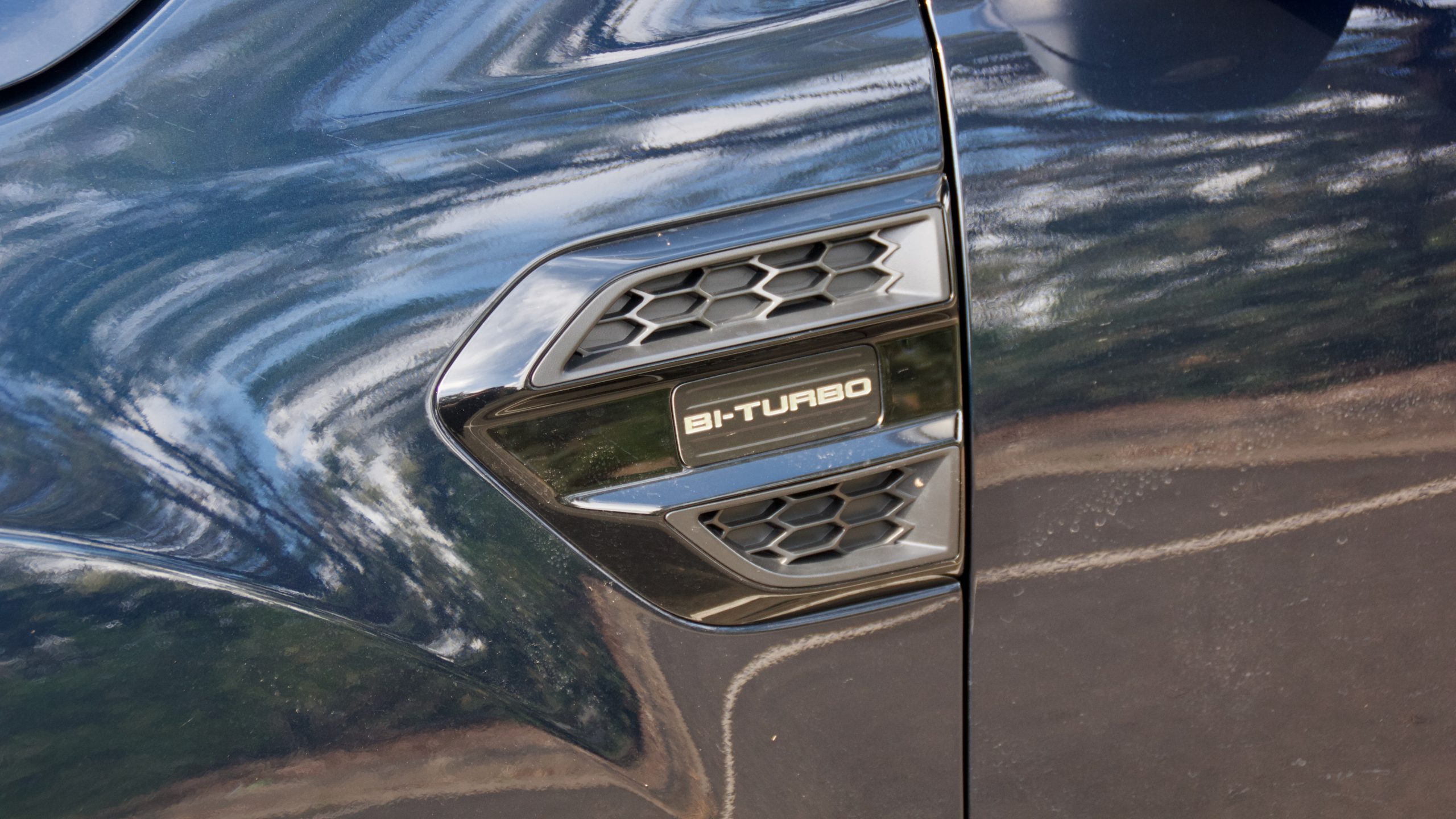
If you’re considering an Everest (or Ranger, for that matter), make sure to get this engine as it’s a big improvement on the cheaper and older 3.2-litre engine. While its displacement is lesser, it’s gruntier, quieter and also much more fuel efficient. It’s definitely worth the extra $1,500 outlay.
The 10-speed automatic transmission is the only option available with the 2.0-litre engine and while it does have a lot of ratios and can sometimes get slightly confused, the ratio gaps are small and its drivability is excellent as you’re always in the torque band. It certainly feels quicker than the MU-X and in particular, the slow Pajero Sport.
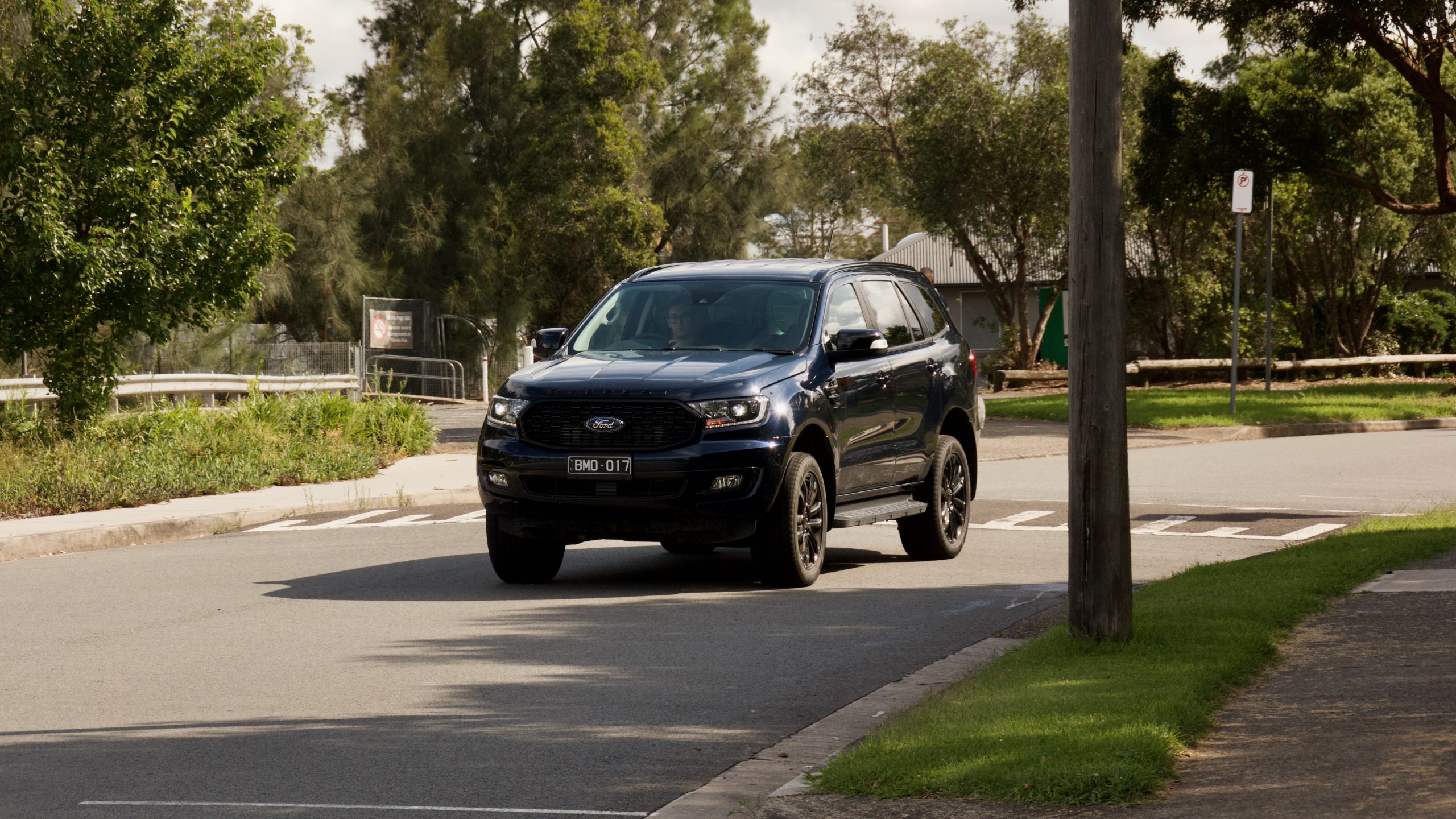
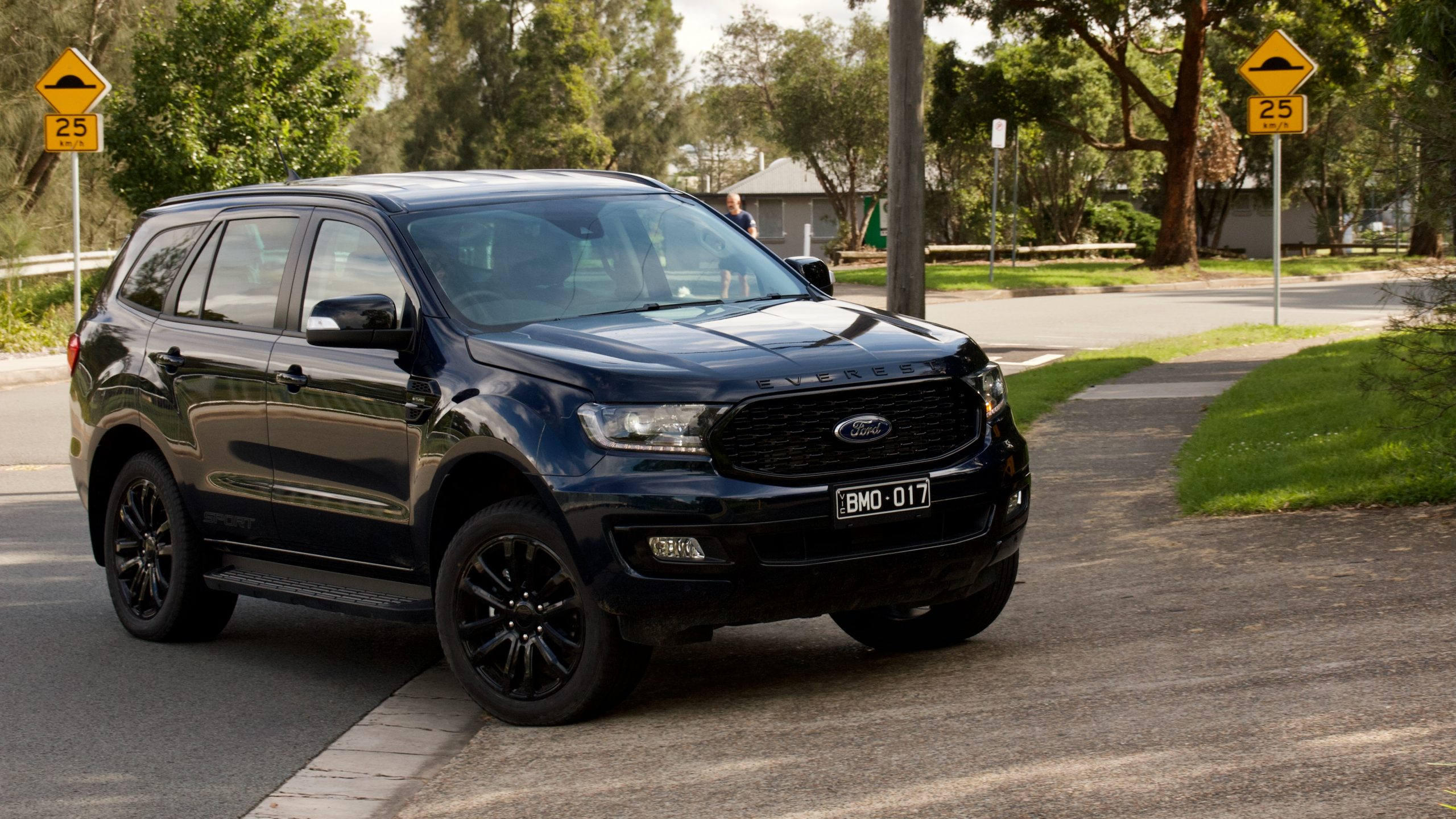
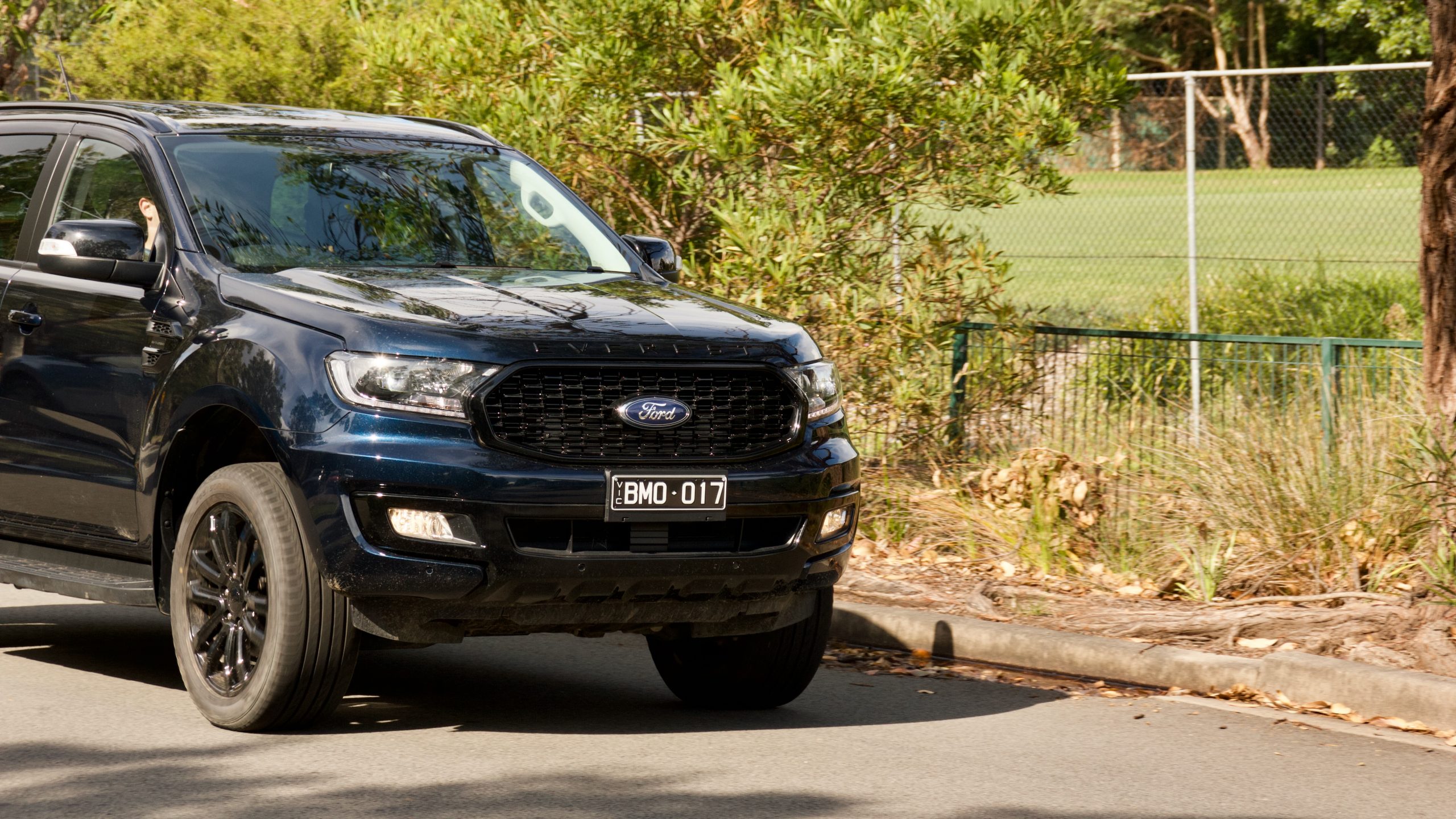
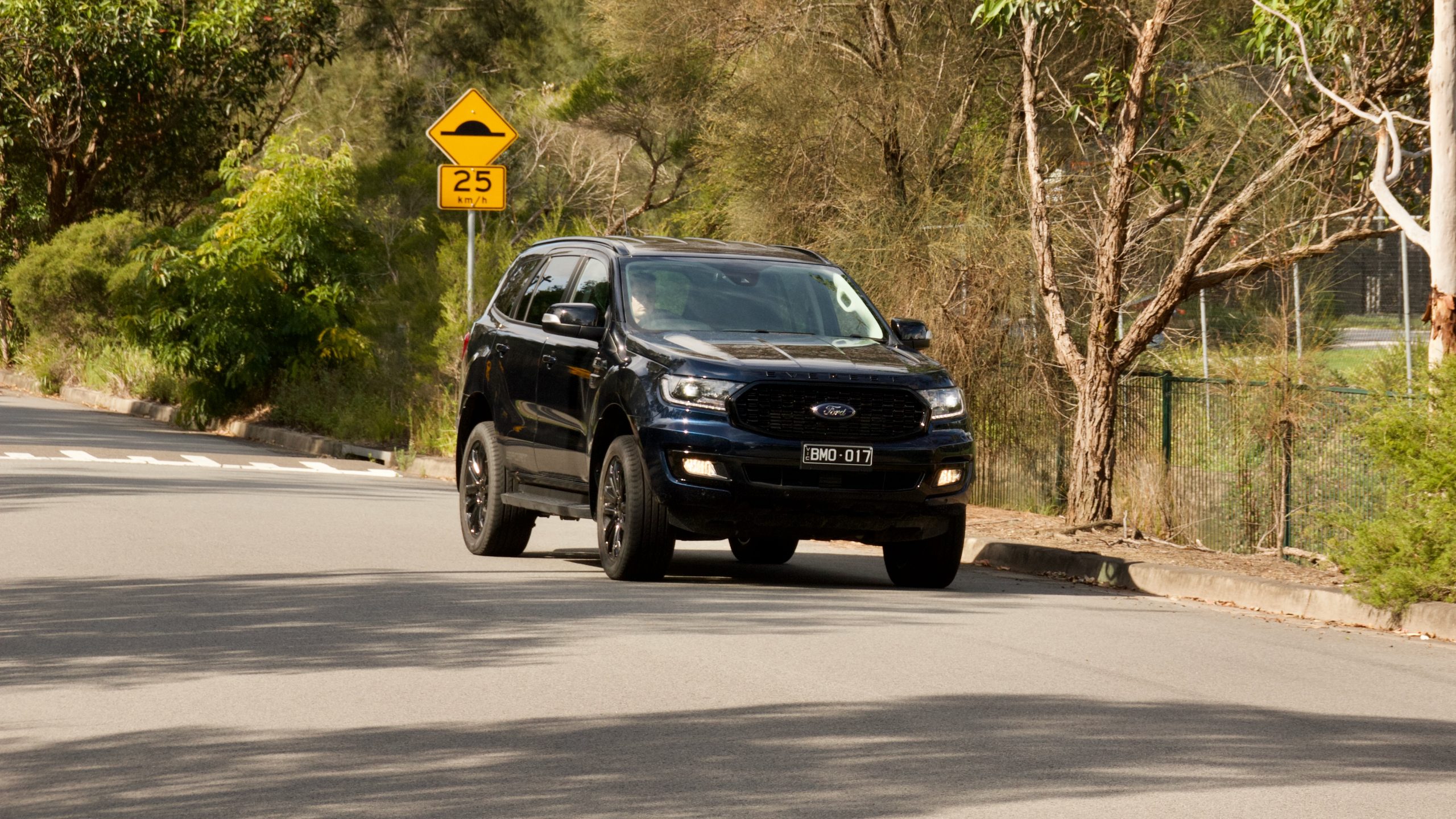
Ford claims that the Everest 2.0-litre will use 7.0L/100km on a combined cycle and we achieved 8.9L/100km in mixed driving, which isn’t too far off Ford’s claim. The Everest has an 80-litre fuel tank, which will give around 900km of driving based off our consumption.
Ride & Handling: 9/10
Sitting on the same ‘T6’ platform as the hugely successful – and Australian developed – Ranger ute, the Everest offers the most car-like dynamics in the body-on-frame large SUV segment. Why is that? Well, despite featuring a live rear axle with coil springs and a watts link – and not a fully-independent setup – the Everest is well tuned for Australian roads.
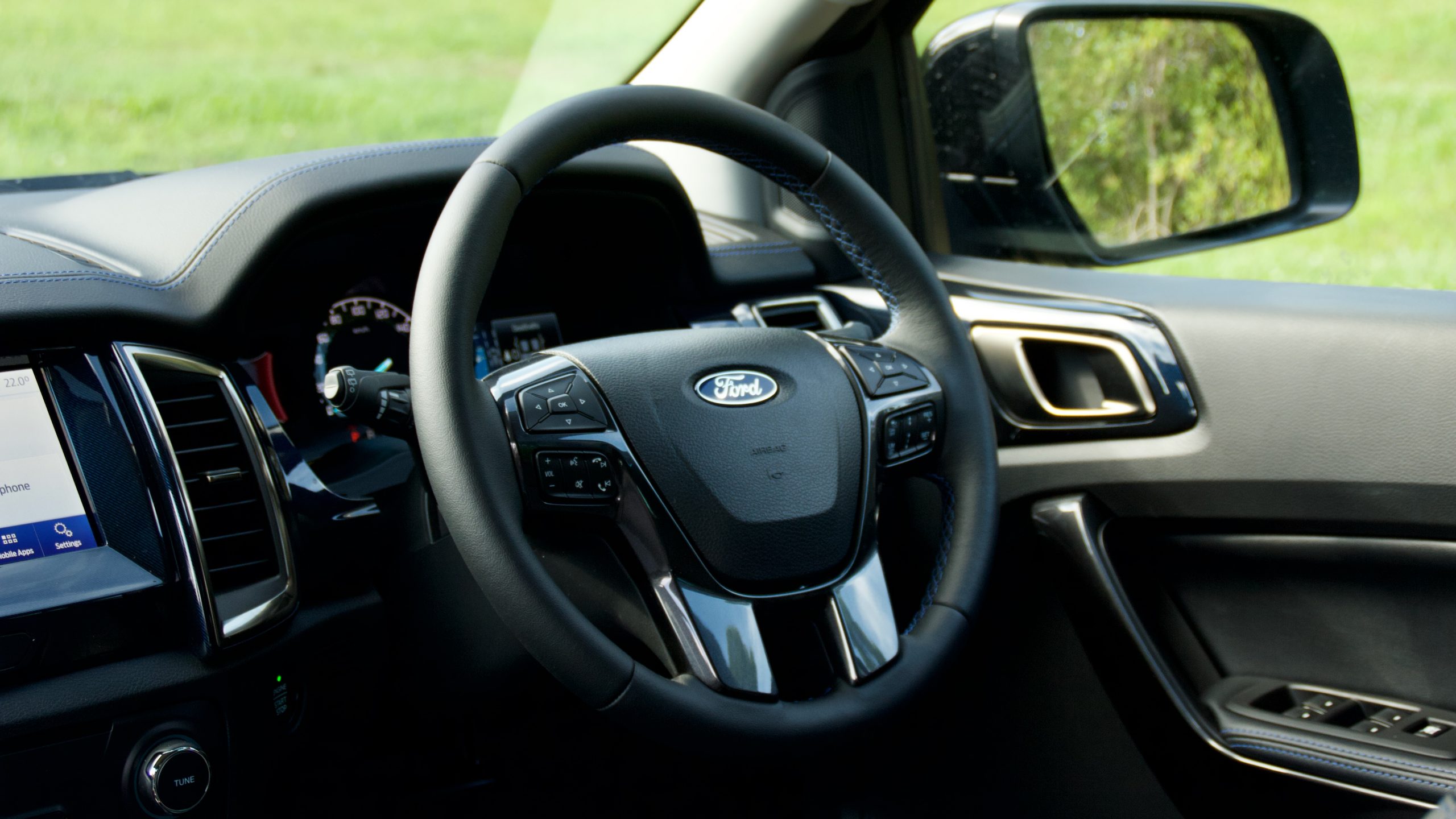
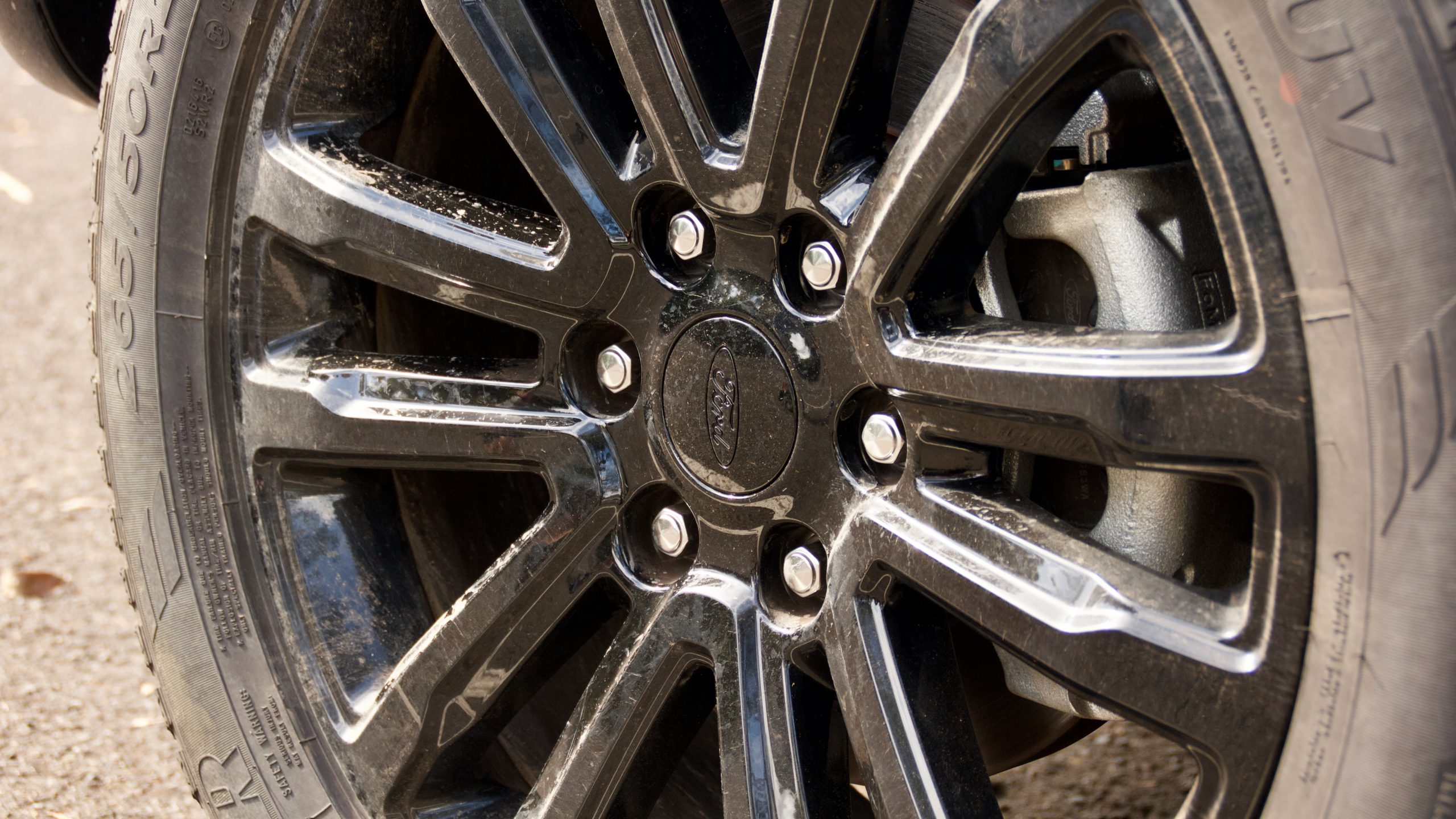
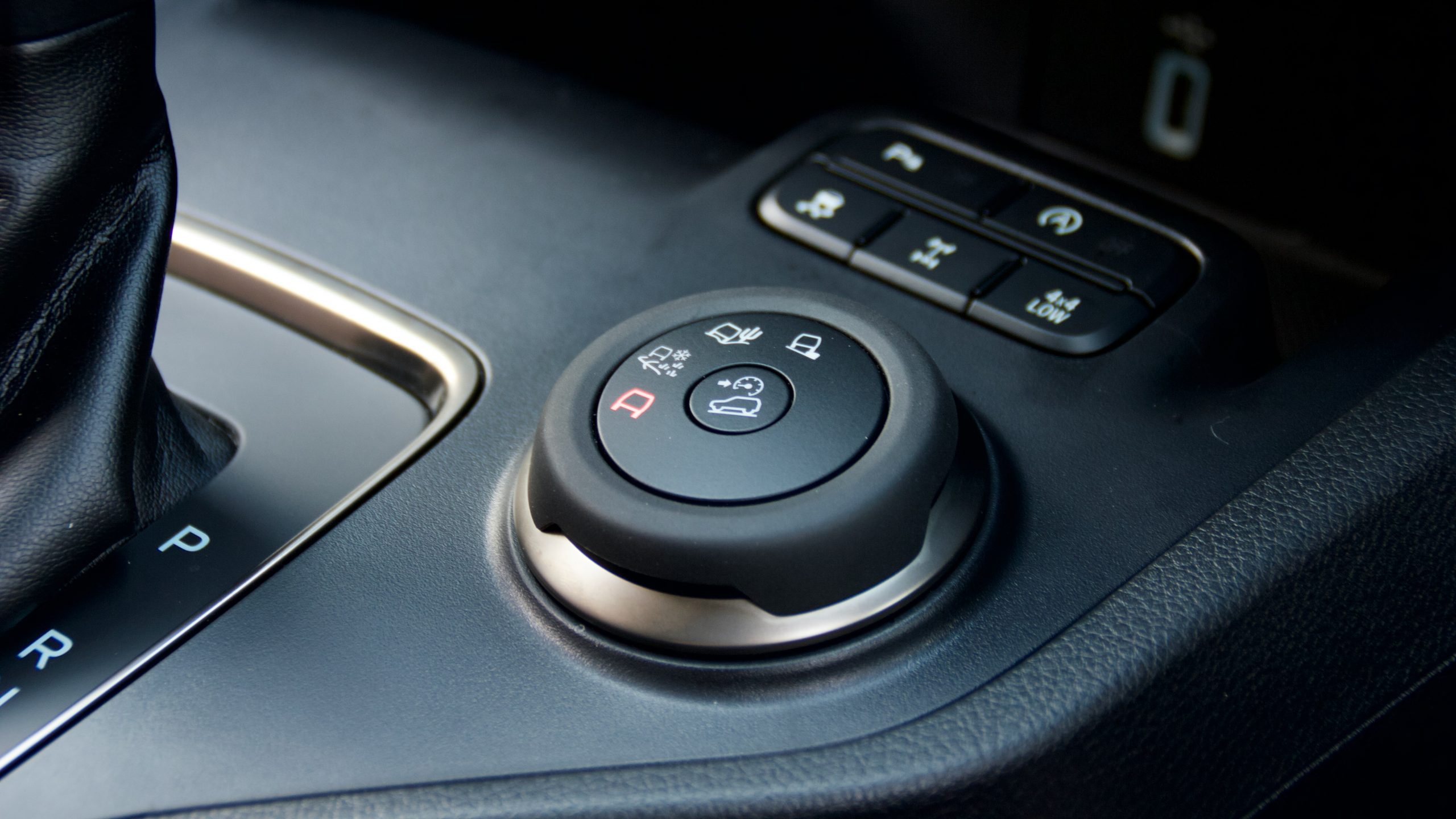
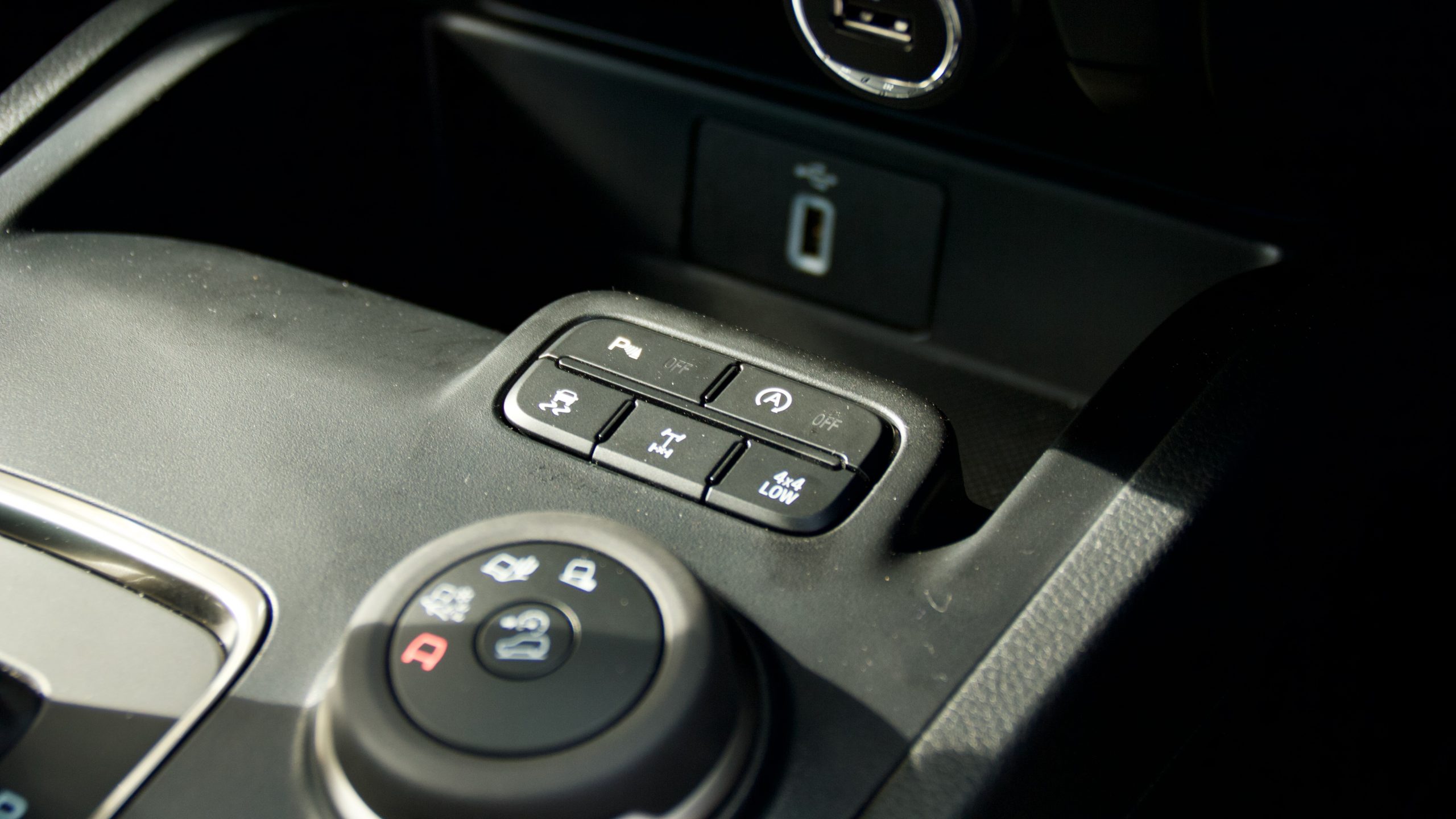
The Everest’s ride quality is a touch firmer than the MU-X – perhaps because it has independent rear suspension – but the body control is superior and it settles quicker after bigger bumps. The steering is also more feelsome and slightly heavier than the MU-X’s quicker rack, which gives it more roadholding feel – thankfully it’s also much lighter and quicker than the Pajero Sport’s heavy, slow rack. The Everest is definitely the most car-like product to drive in this segment.
It’s also a great off-roader with dual-range, hill descent control and off-road modes such as mud, sand and rock to help off-road driving. Its ground clearance is 227mm and its maximum water wading ability is 800mm. Its approach angle is 29.5 degrees, its departure angle is 25 degrees and its breakover angle is 21.5 degrees. We tested the Everest in mild off-roading conditions and it genuinely didn’t even break a sweat, with a helpful hill descent control system and excellent off-road modes that tailor the traction control to the surface you’re driving on.
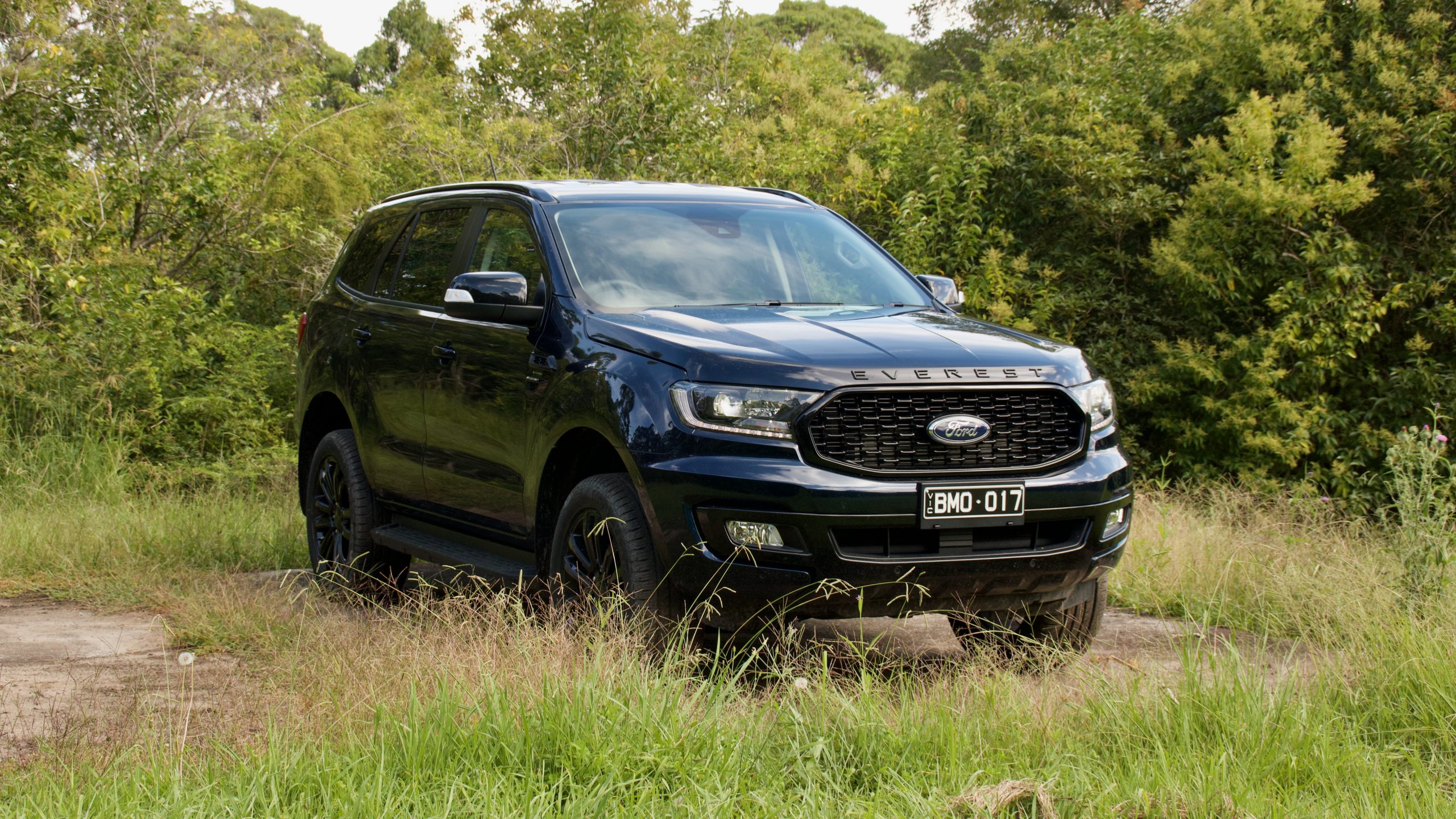
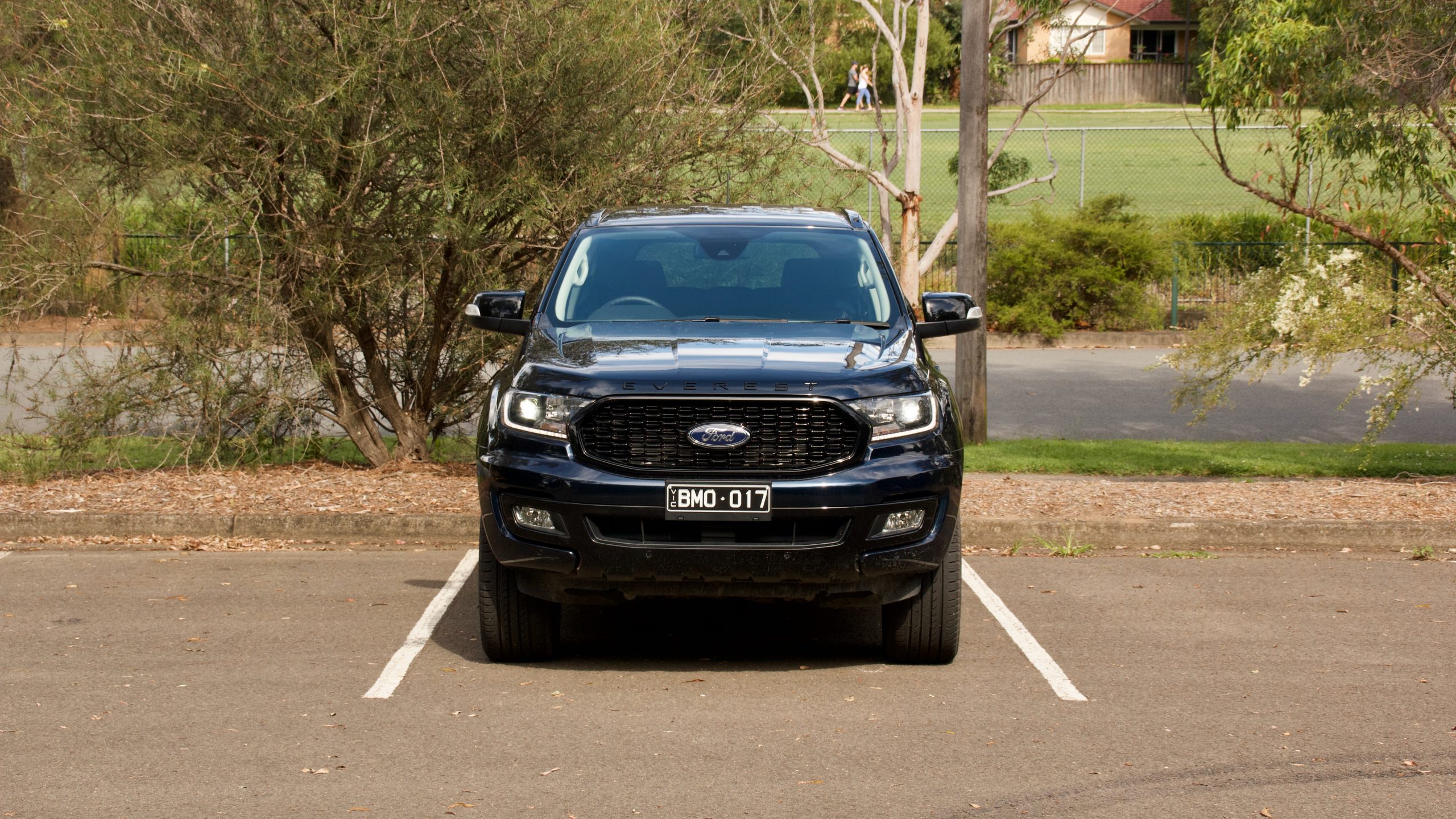
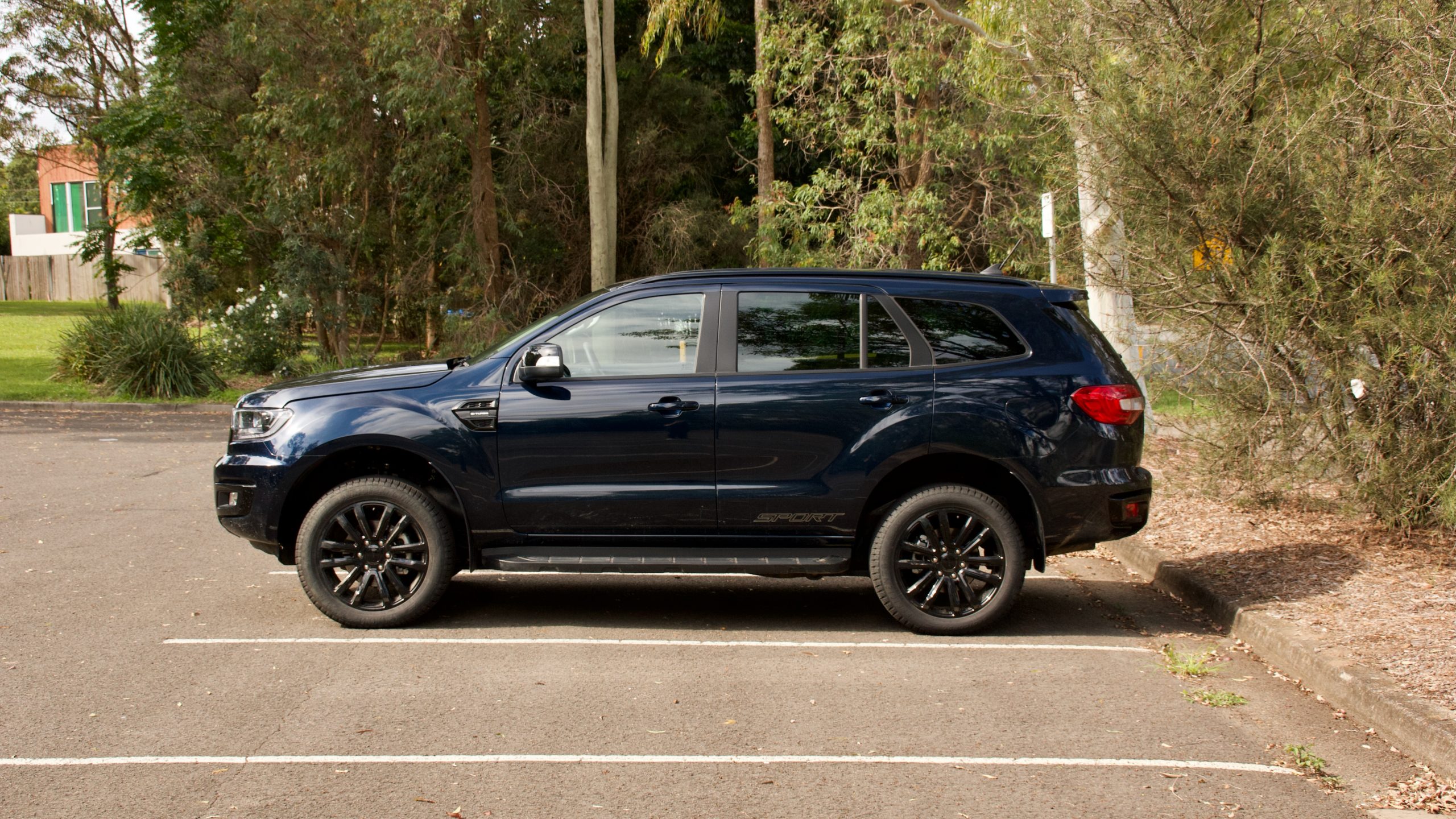
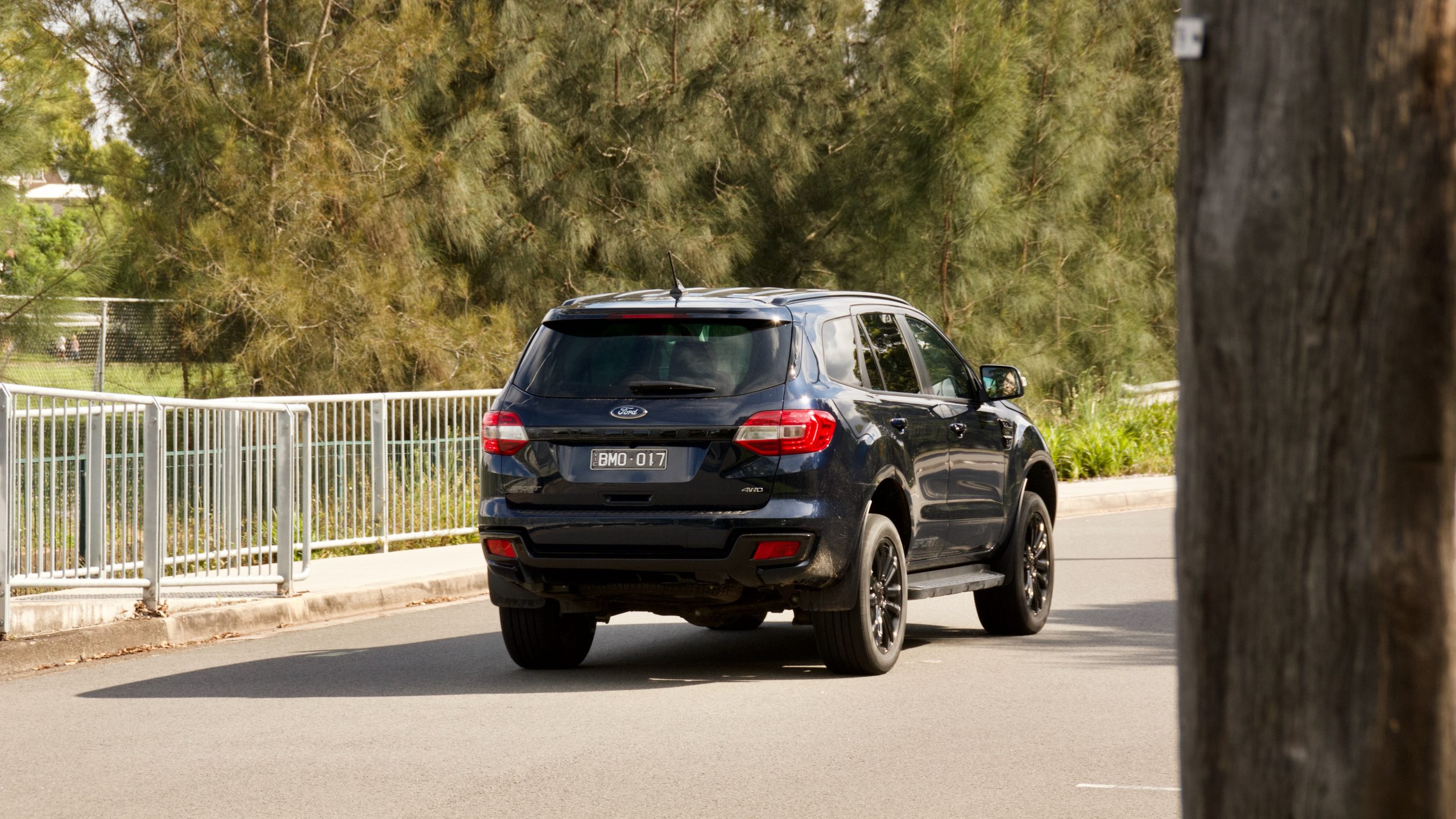
The Everest 2.0L will likely be used for towing and its braked towing capacity is 3,100kg, which is 400kg less than the MU-X, though equal to the Pajero Sport.
Interior & Practicality: 8/10
The similarities between the Ranger and Everest don’t end with mechanicals. Those familiar with the Ranger’s interior will feel immediately at home in the Everest – their dashboards are largely identical. We think that’s no bad thing as the Ranger’s cabin is definitely one of the best in the ute segment, and the Everest’s is similarly placed in its segment too. Both are starting to feel a bit dated, it must be said, but there are all-new versions of both cars coming this year.
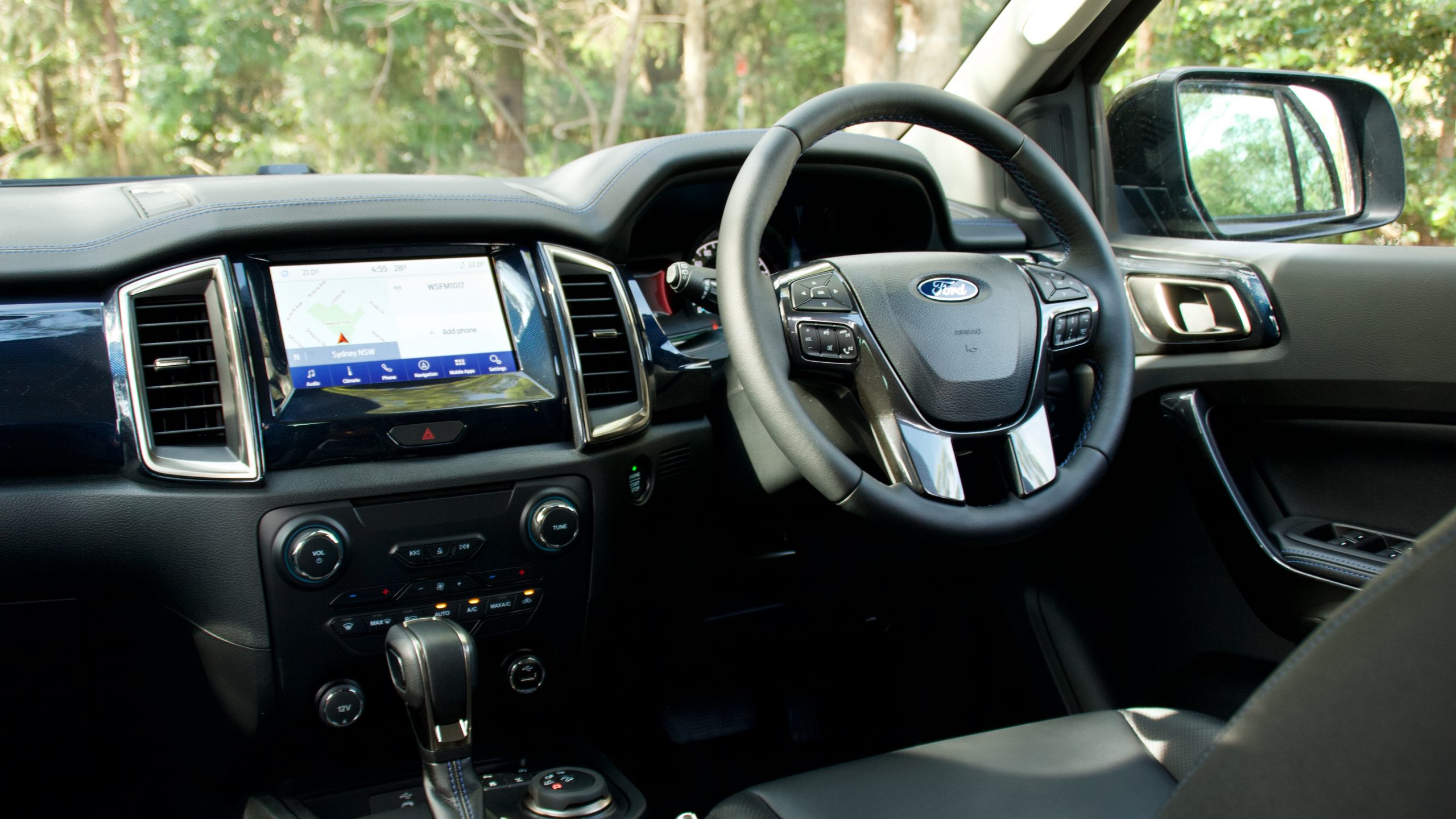
The quality inside the Everest is reasonable, though hardly special – the top of the dashboard and door tops are soft touch and the leather used on the steering wheel and seats is slightly coarse but fine for the segment. The cabin is also reasonably practical with big door bins, a big centre console box and a big glovebox, but that’s about it – no centre console tray, no wireless charging and no clever secret storage spots.
Centre of the Everest’s dashboard is an 8.0-inch touchscreen that runs Ford’s ‘SYNC3’ infotainment system. The screen itself is good quality and quick to touch too, as well as offering a lot of features like wired smartphone mirroring, navigation with live traffic and digital radio.
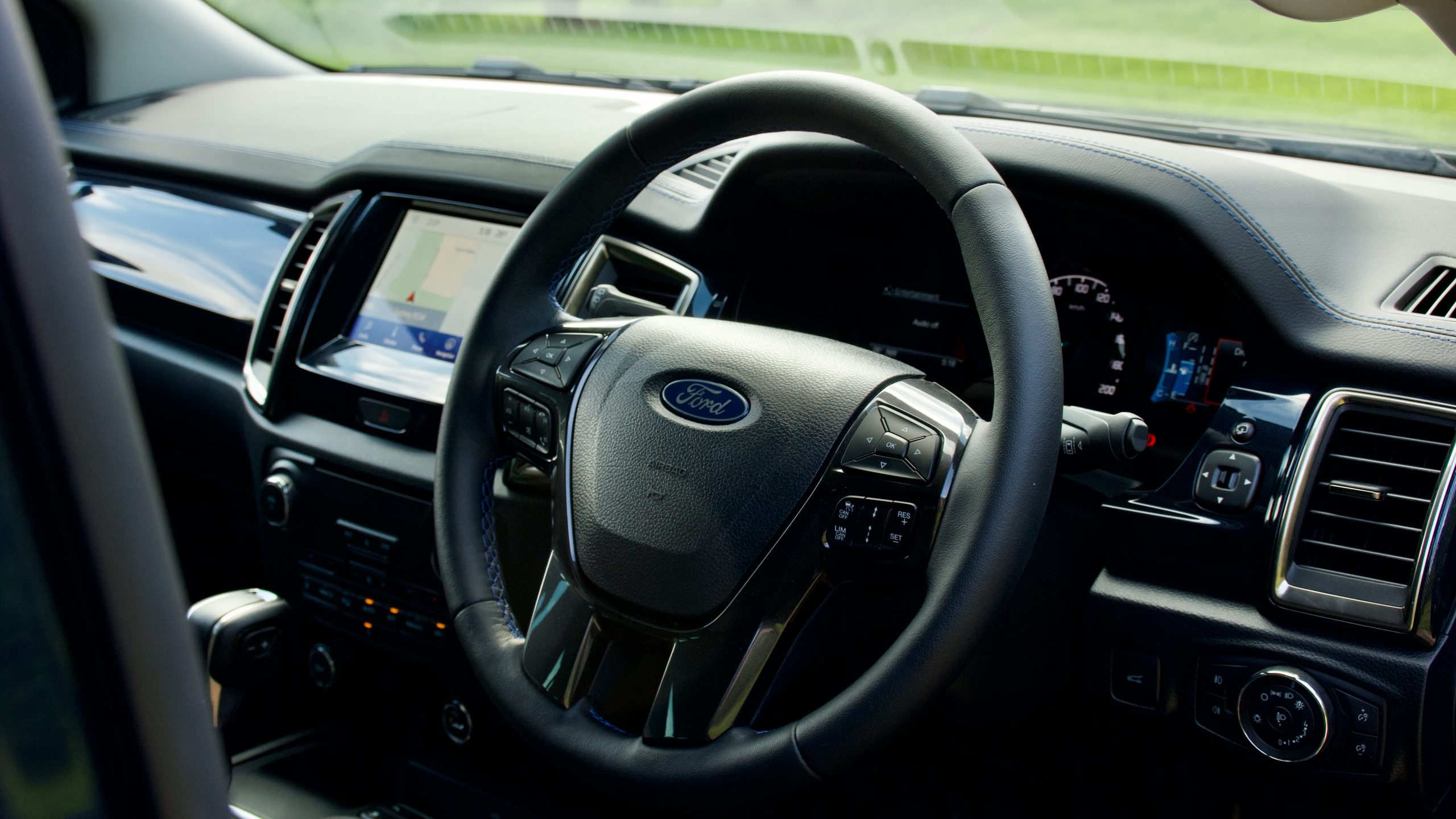
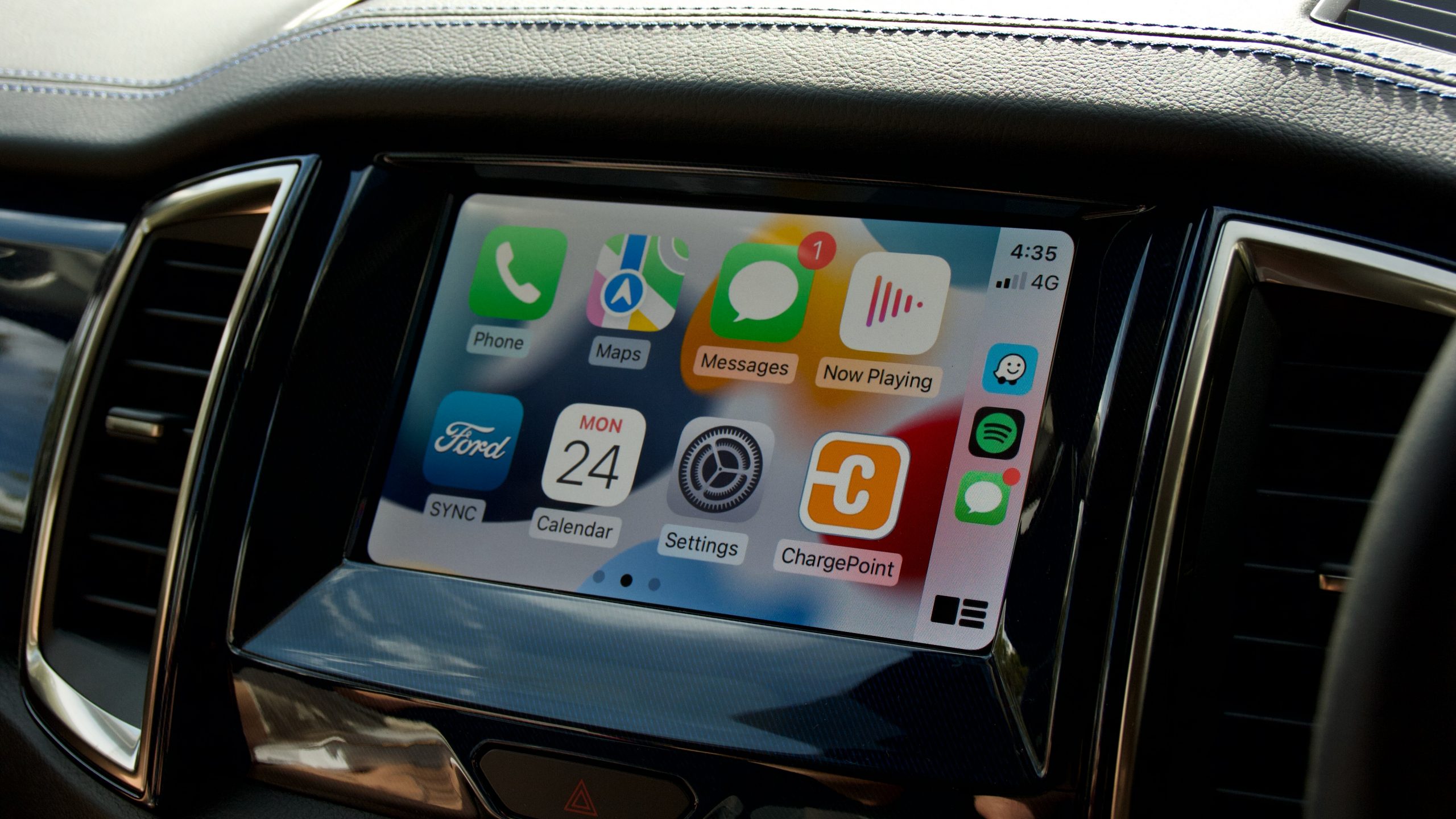
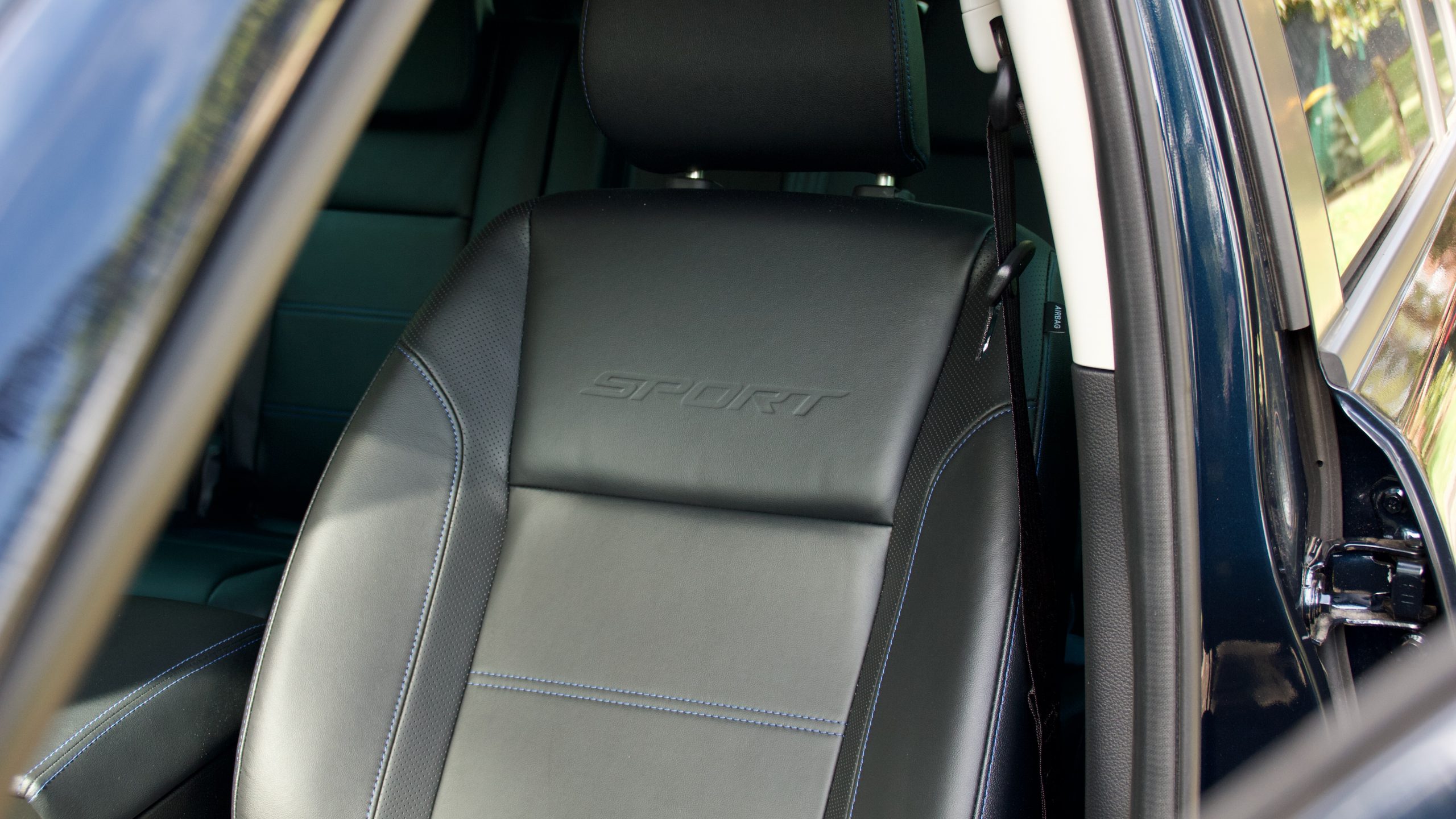
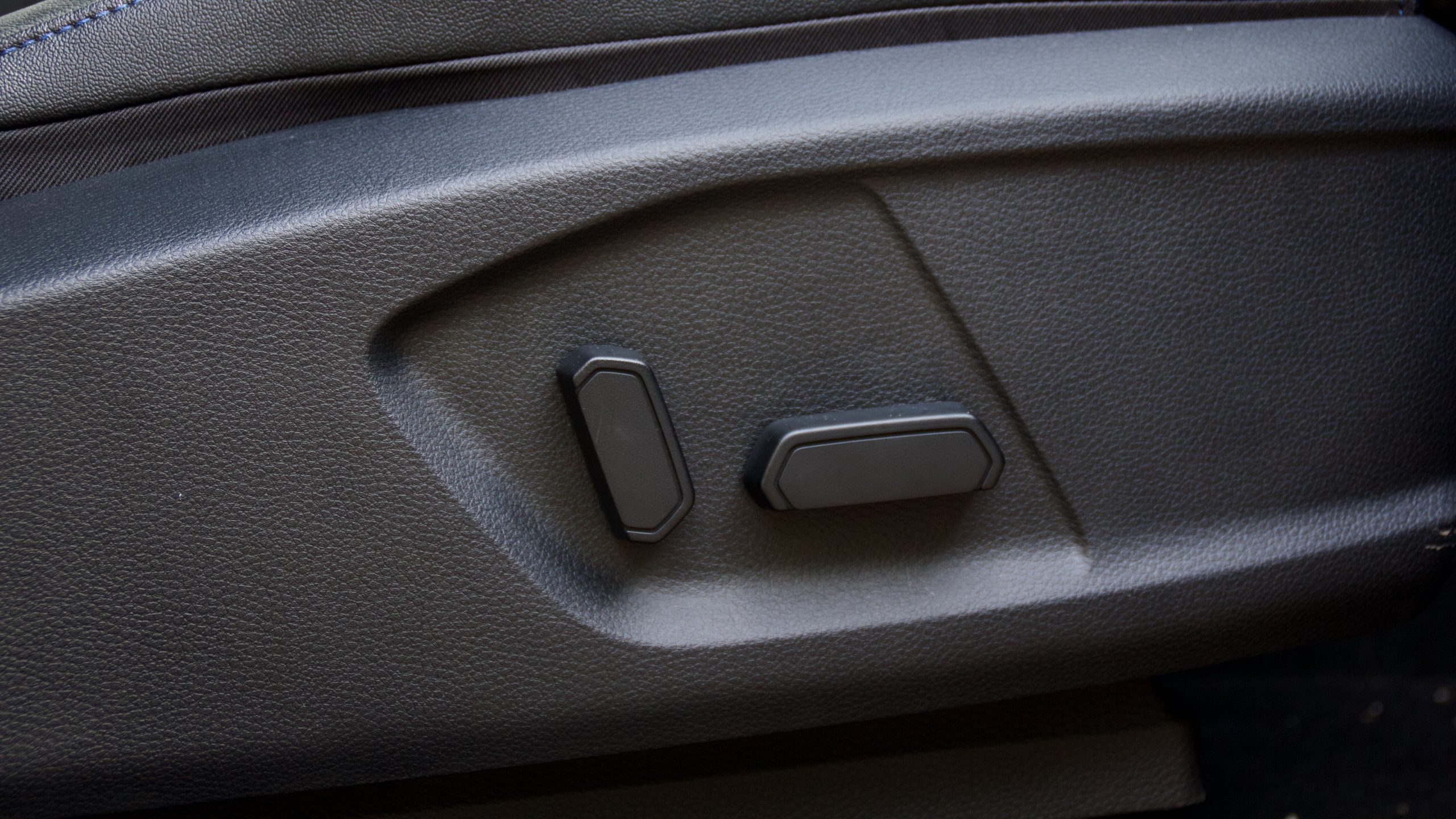
Even though SYNC4 is on the way soon, we think that SYNC3 is one of the best infotainment systems around thanks to its ease of use. We find it to be more intuitive than the system used in the Isuzu MU-X, while the screen is far quicker to use than the Pajero Sport’s ancient system too.
The middle seat of the Everest is comfortable, reasonably roomy and well featured with a 220V socket, a 12V socket, a fan speed controller, vents in the roof, map pockets and door pockets. The third row isn’t quite as commodious as the Isuzu MU-X with somewhat tight head- and legroom, but kids and teens will be fine – it’s certainly much larger than the Pajero Sport.
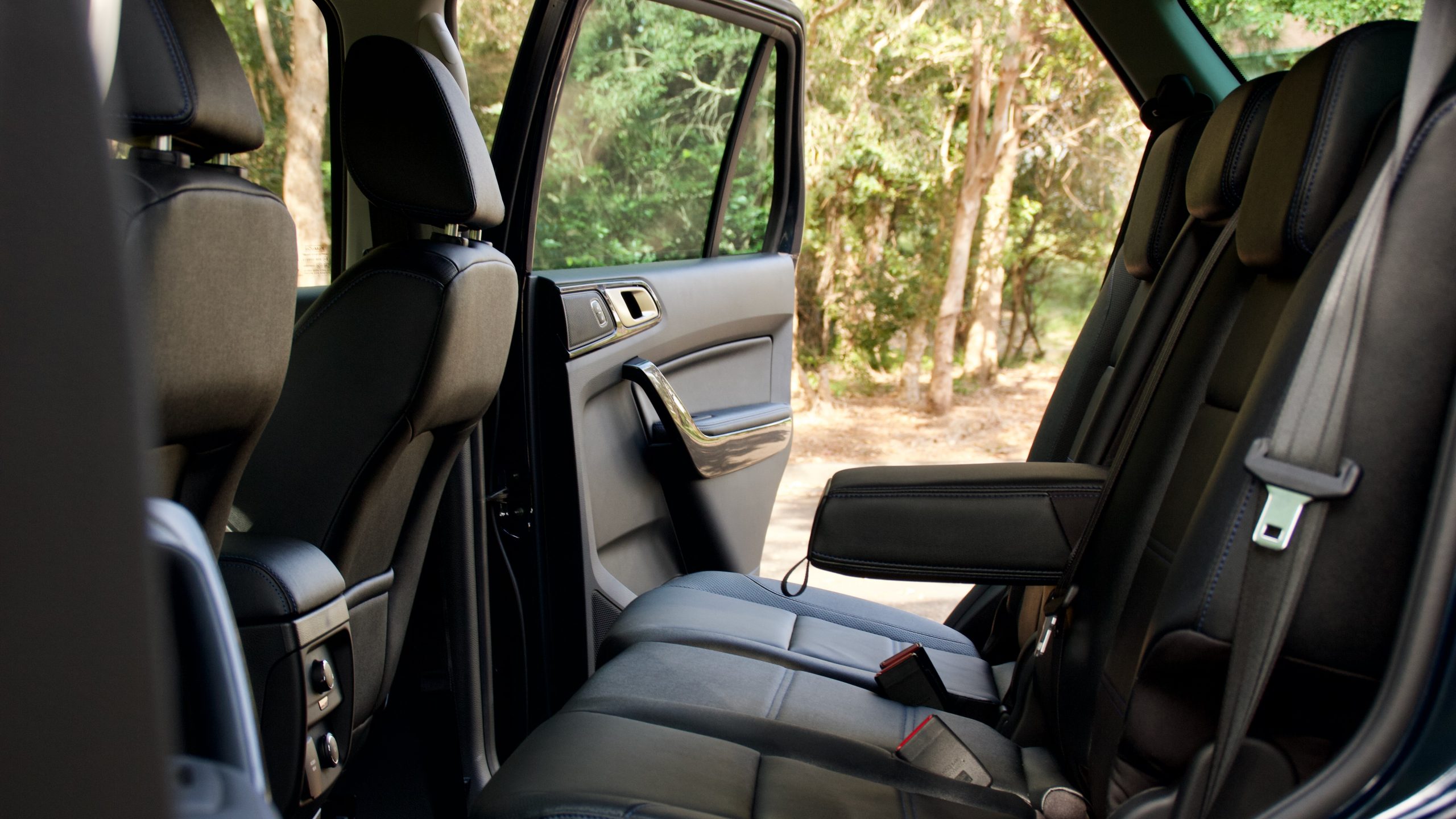
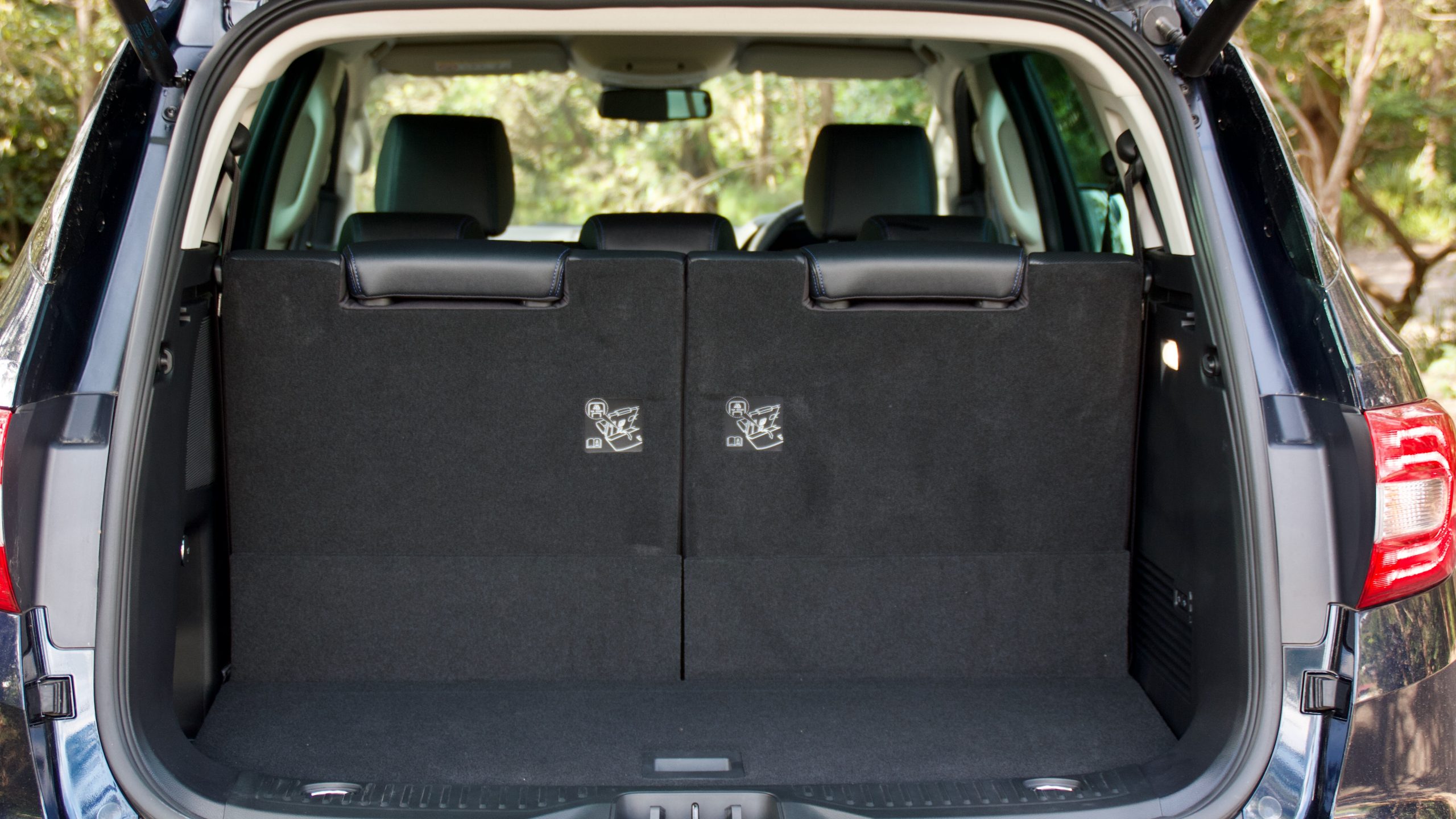
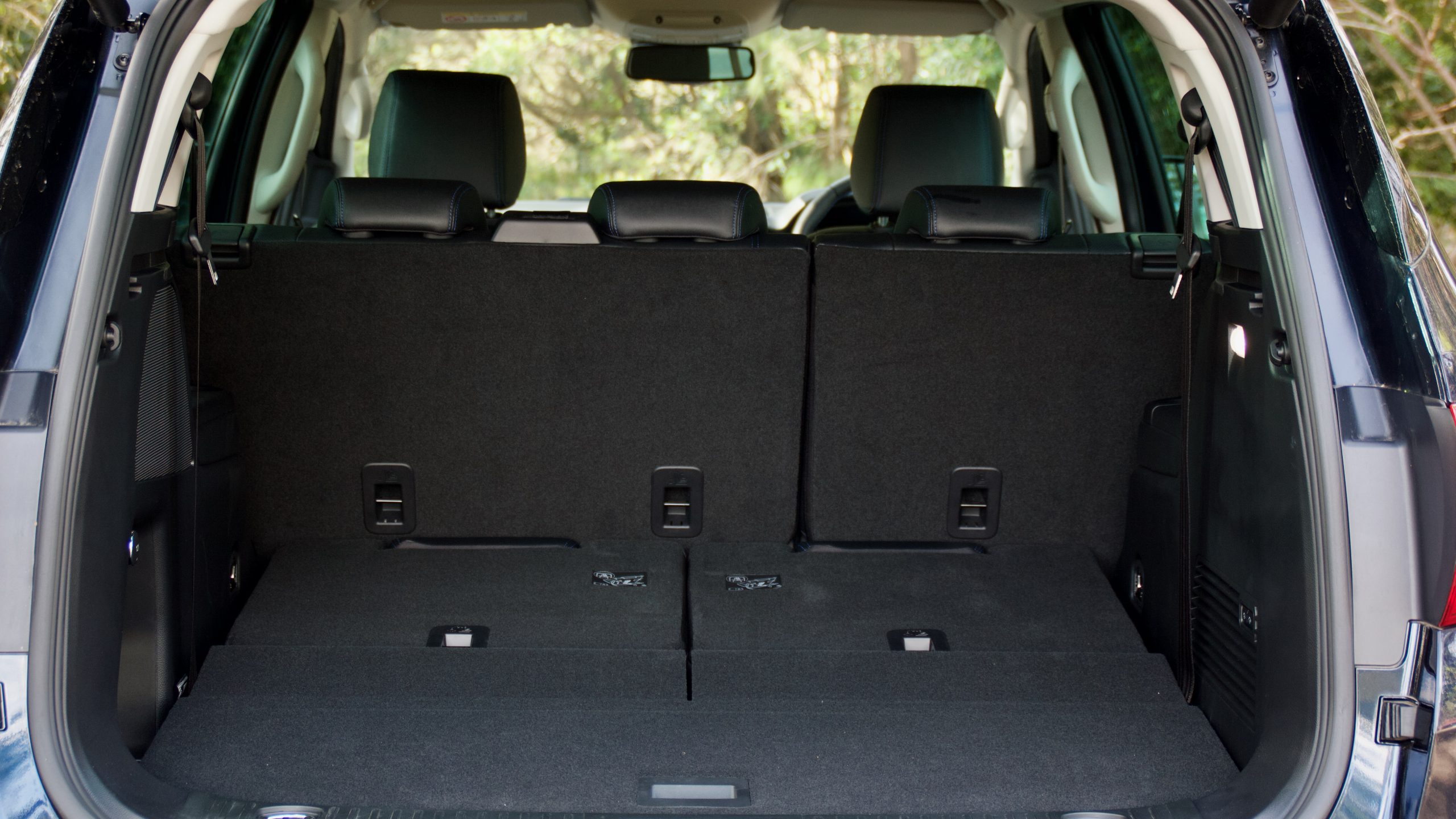
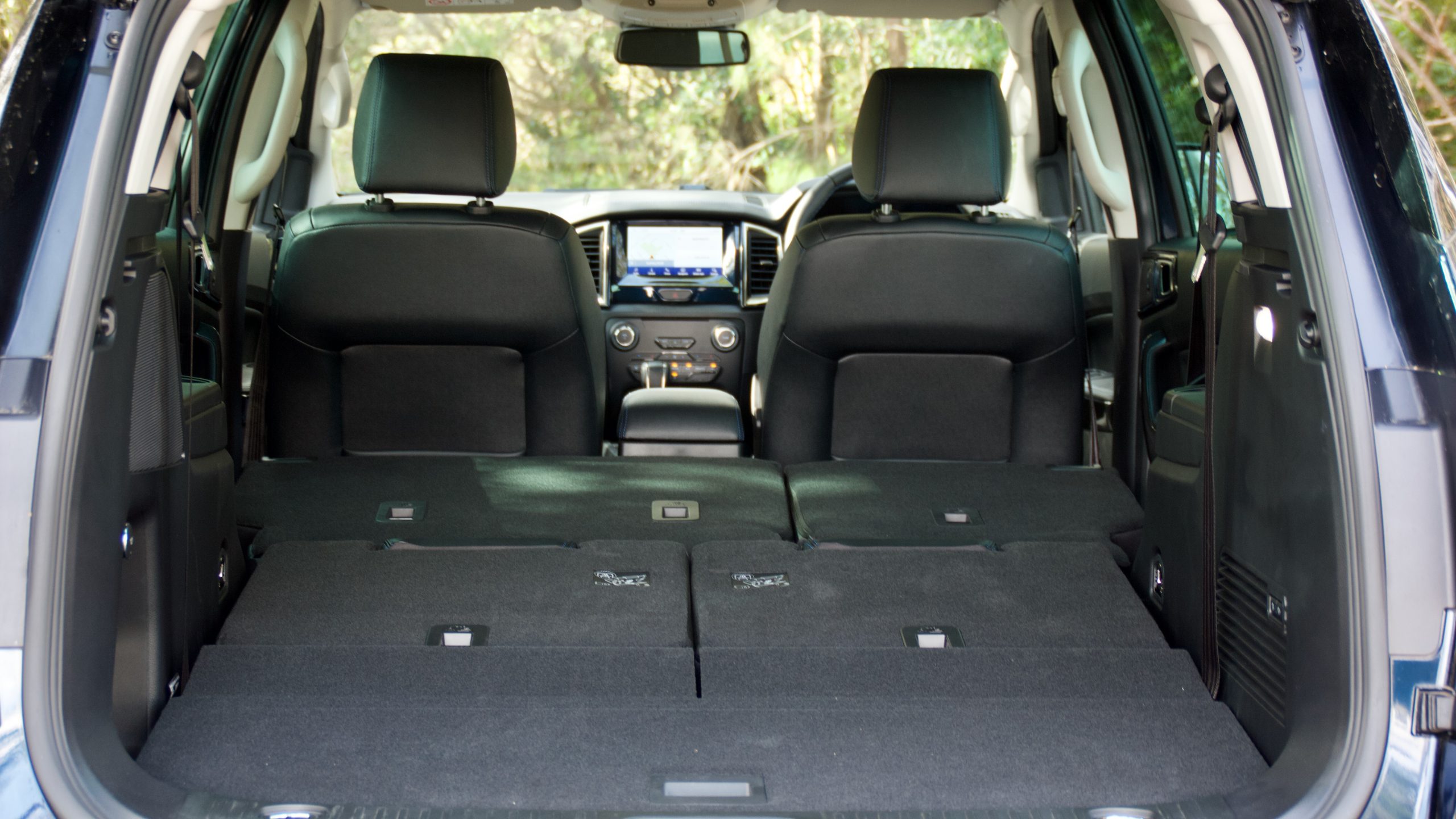
The boot of the Everest offers a lot of space with 249-litres behind the third row, 876L behind the second row and 1,796L with all of the rear seats folded flat. The boot also features some side storage and a 12V socket, and for $300 extra, electric operation of the third row of seating – that’s a box we’d definitely tick. A full size spare wheel lies underneath the car.
Service & Warranty: 8/10
Like other Ford products, the 2022 Ford Everest Sport comes with a five-year/unlimited km warranty and roadside assistance for up to seven years in total (if serviced through Ford) – Isuzu offers a year extra though to a lesser 150,000km and Mitsubishi offers up to 10 years/200,000km of warranty if serviced through the Mitsubishi dealer network.
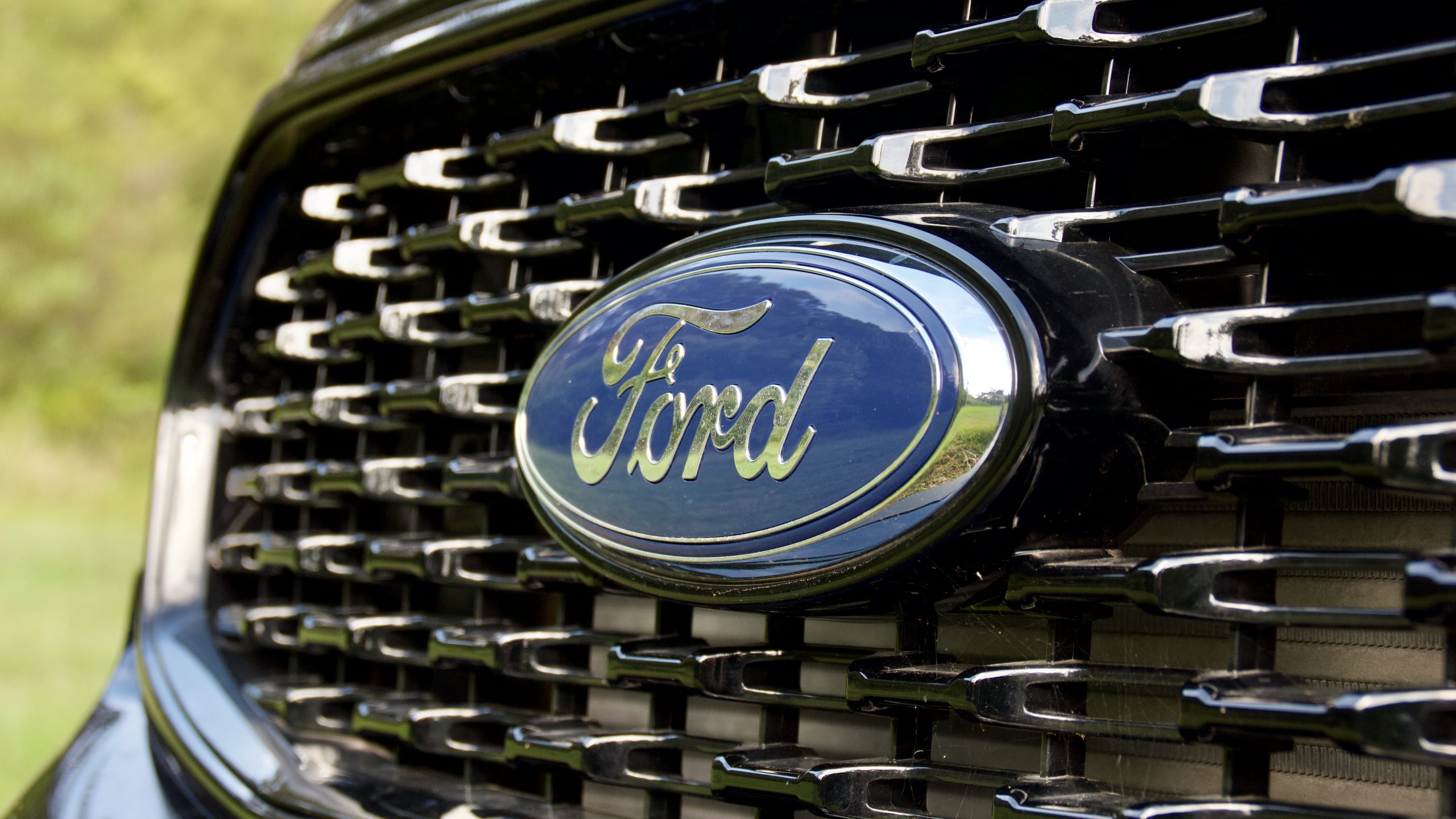
Five years/75,000km of servicing the Everest costs a very reasonable $1,556 ($311 per service), which is $759 less than the MU-X ($2,315 over five years) and Pajero Sport ($2,495).
The 2022 Ford Everest Sport 2.0L BiTurbo DiscoverAuto Rating: 8.0/10
Despite its age, the 2022 Ford Everest Sport is a very solid product in the large SUV segment. It’s good to drive, reasonably well featured, practical, great off road and features a grunty bi-turbo diesel engine that’s also reasonably fuel efficient as well. Really, our biggest problem with it is its value equation, as competitors from both Isuzu and Mitsubishi are much better value for money.
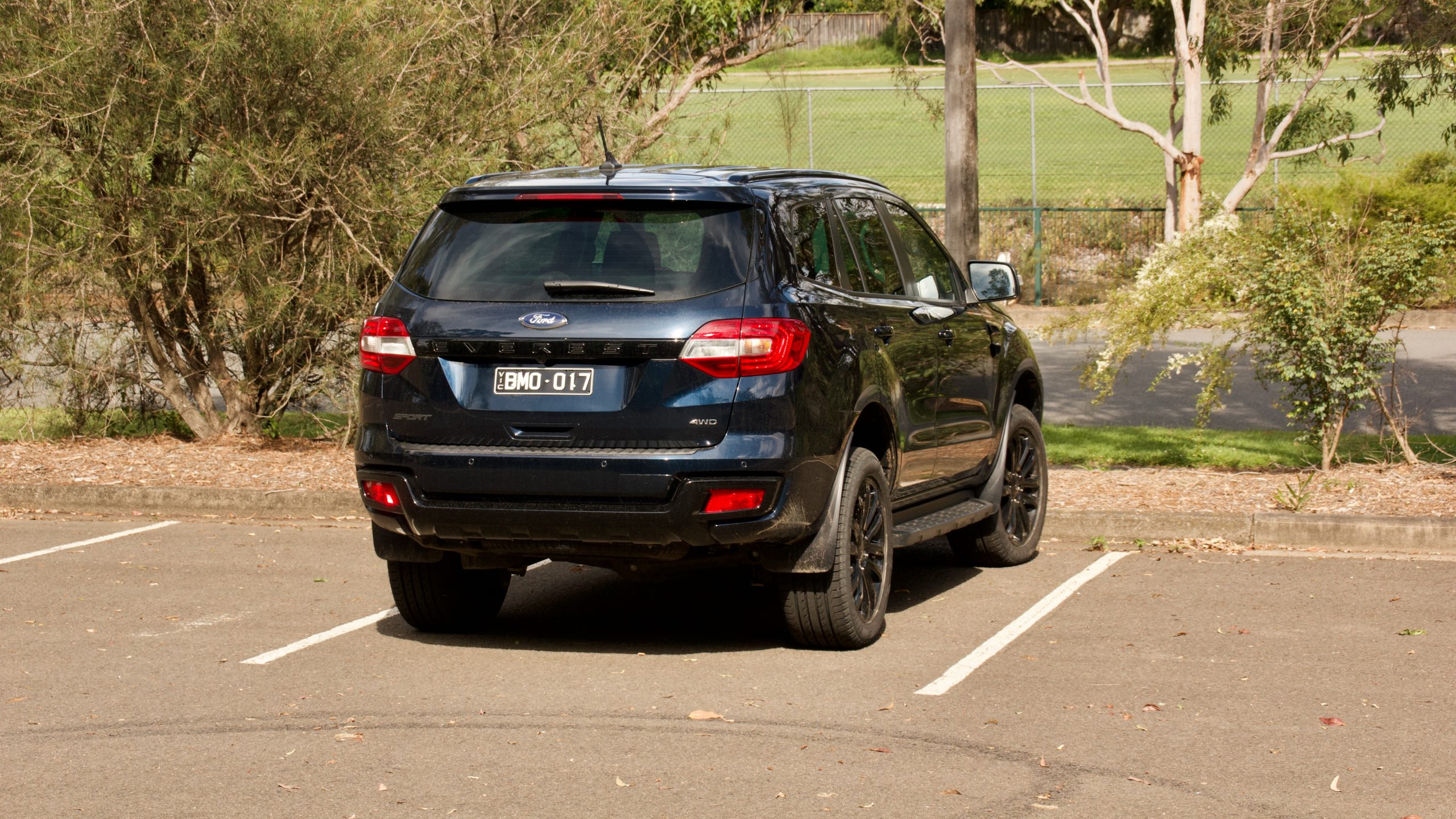
But what the Everest shows is that – like the Ranger – Australian engineers are very much still needed, as the way it drives is excellent. It’s more car like and natural to drive than its chief competitors, all while still offering great off-road ability and reasonable towing capability. A new model is coming soon, which we think will be an even better product. Better than our segment favourite, the Isuzu MU-X though? Watch this space.
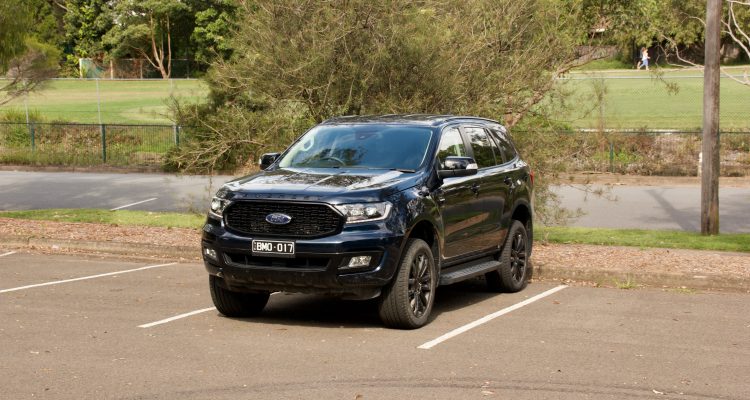
Leave a Reply